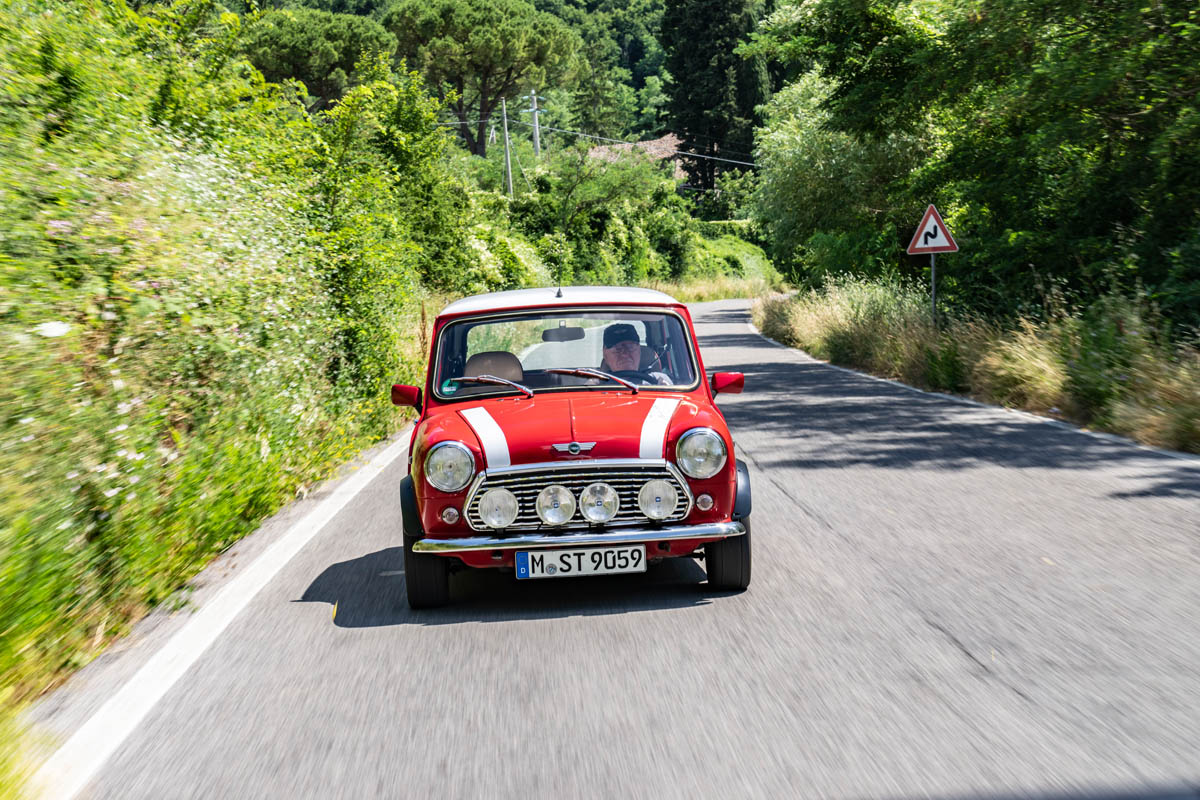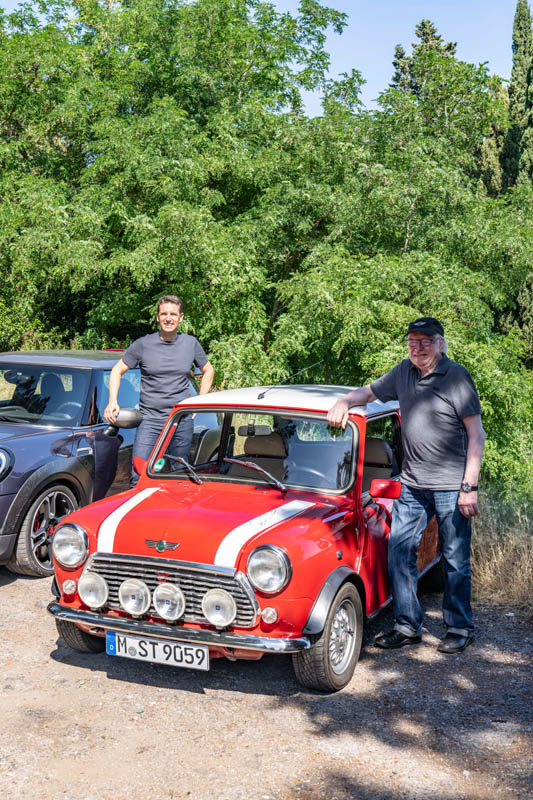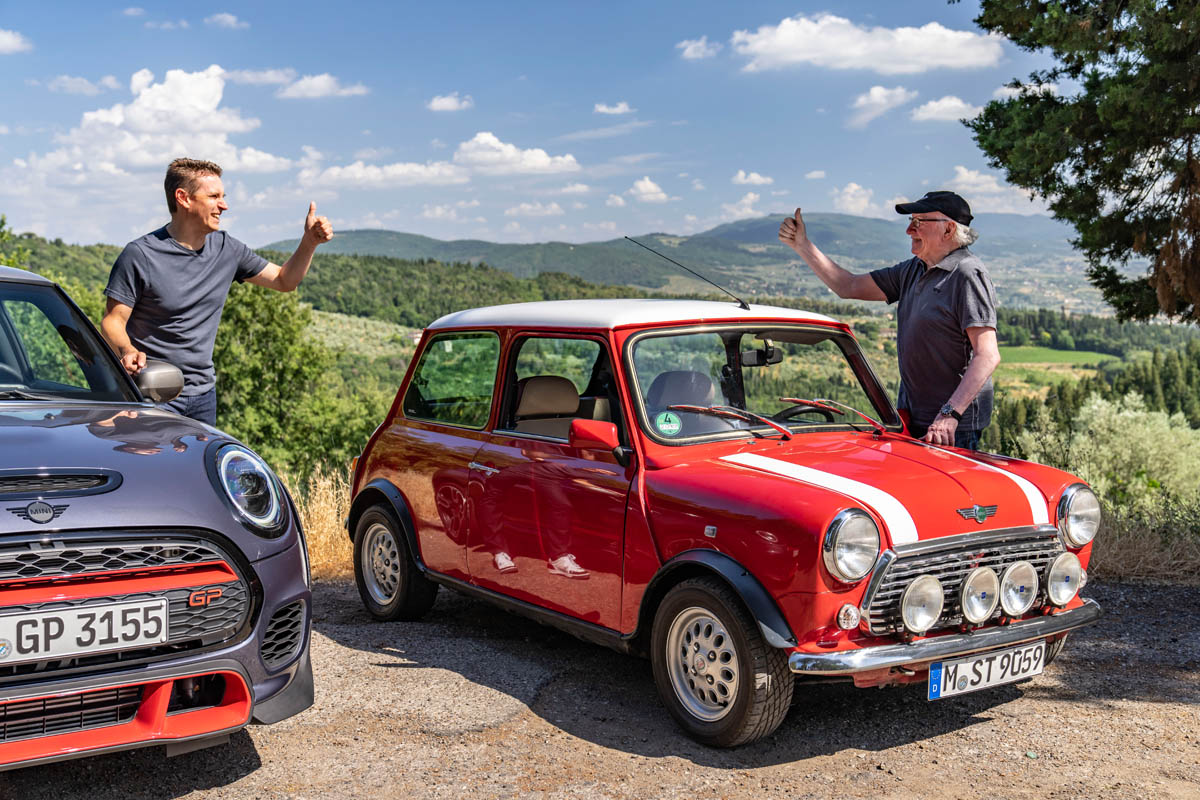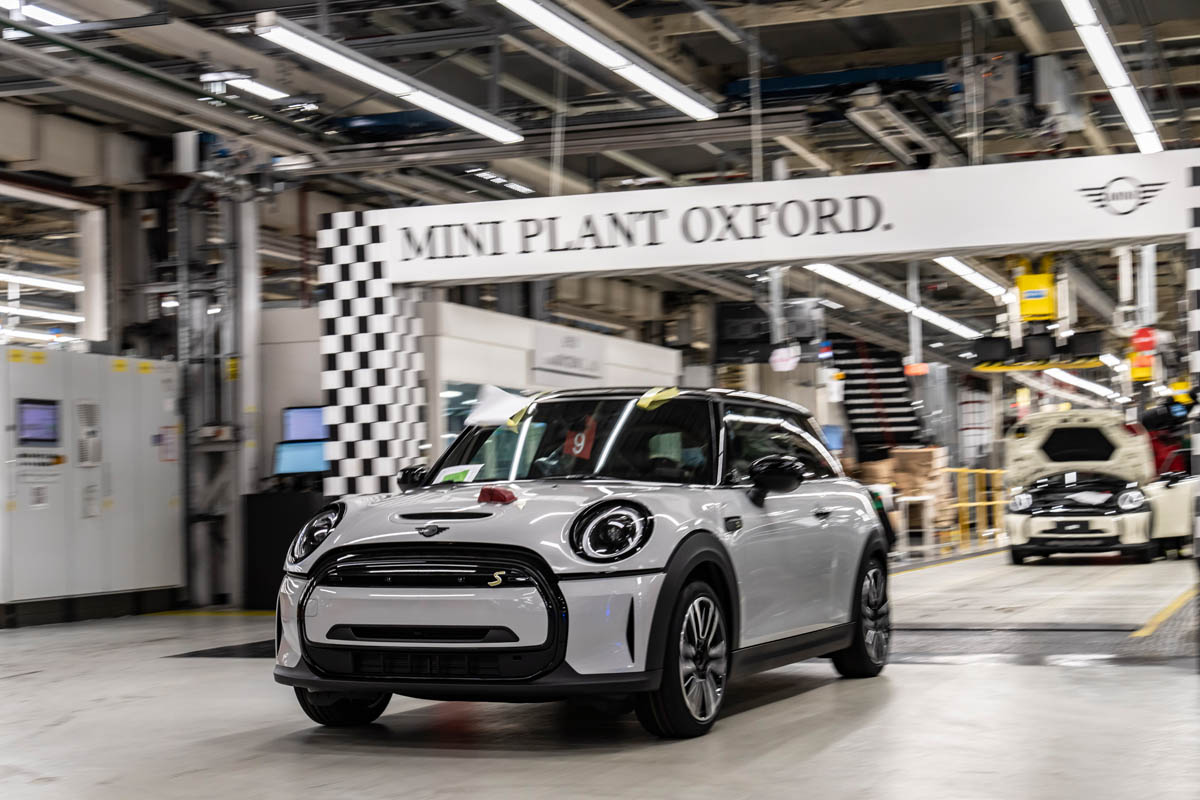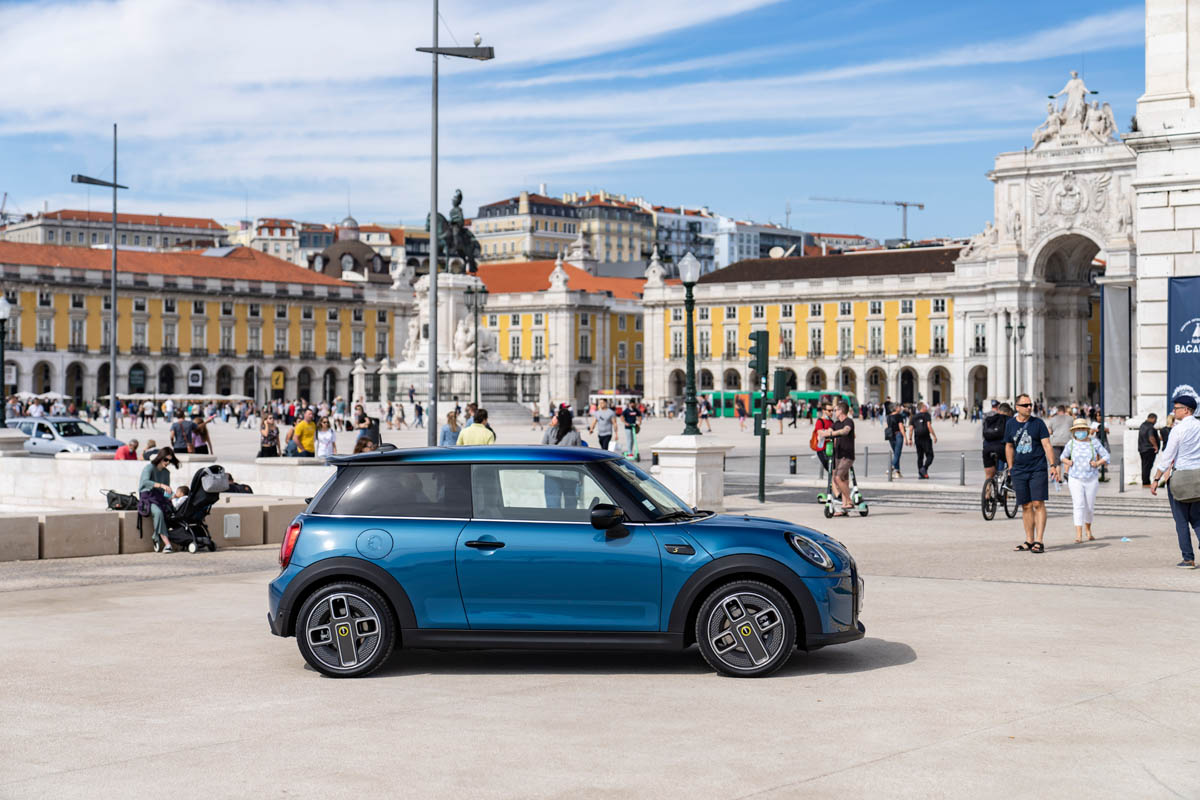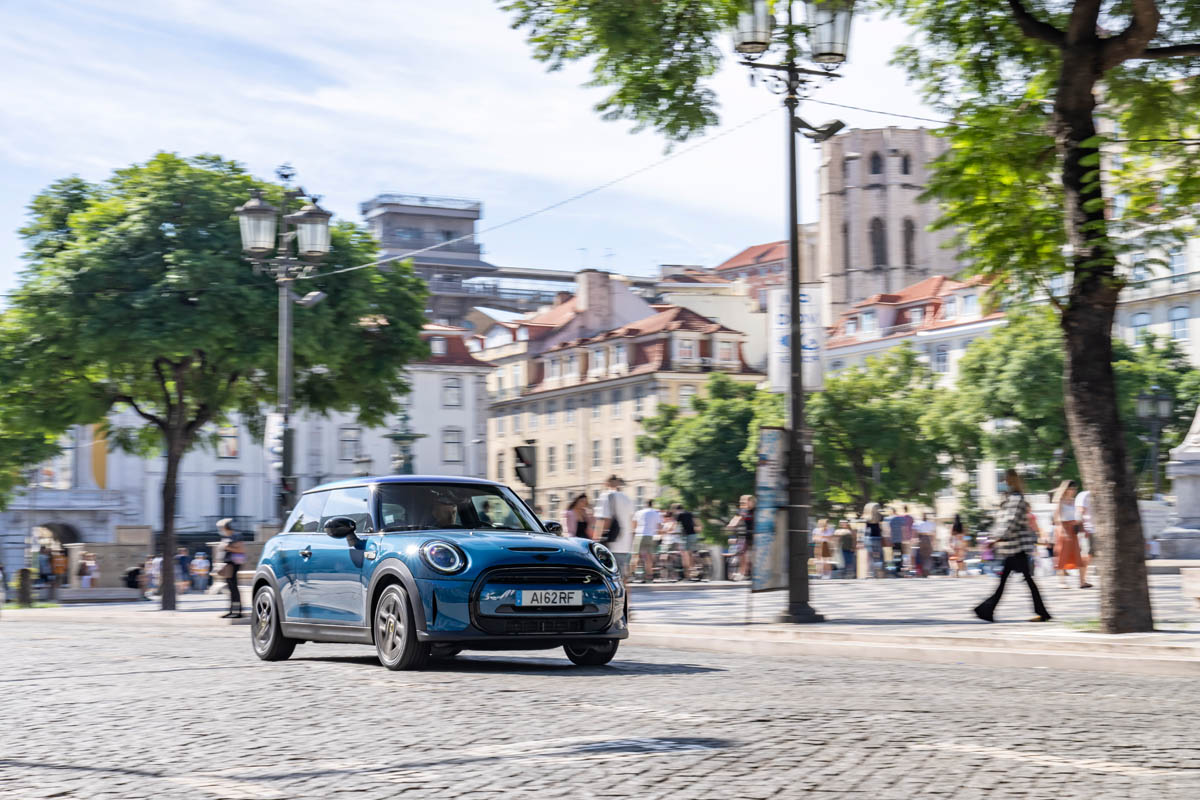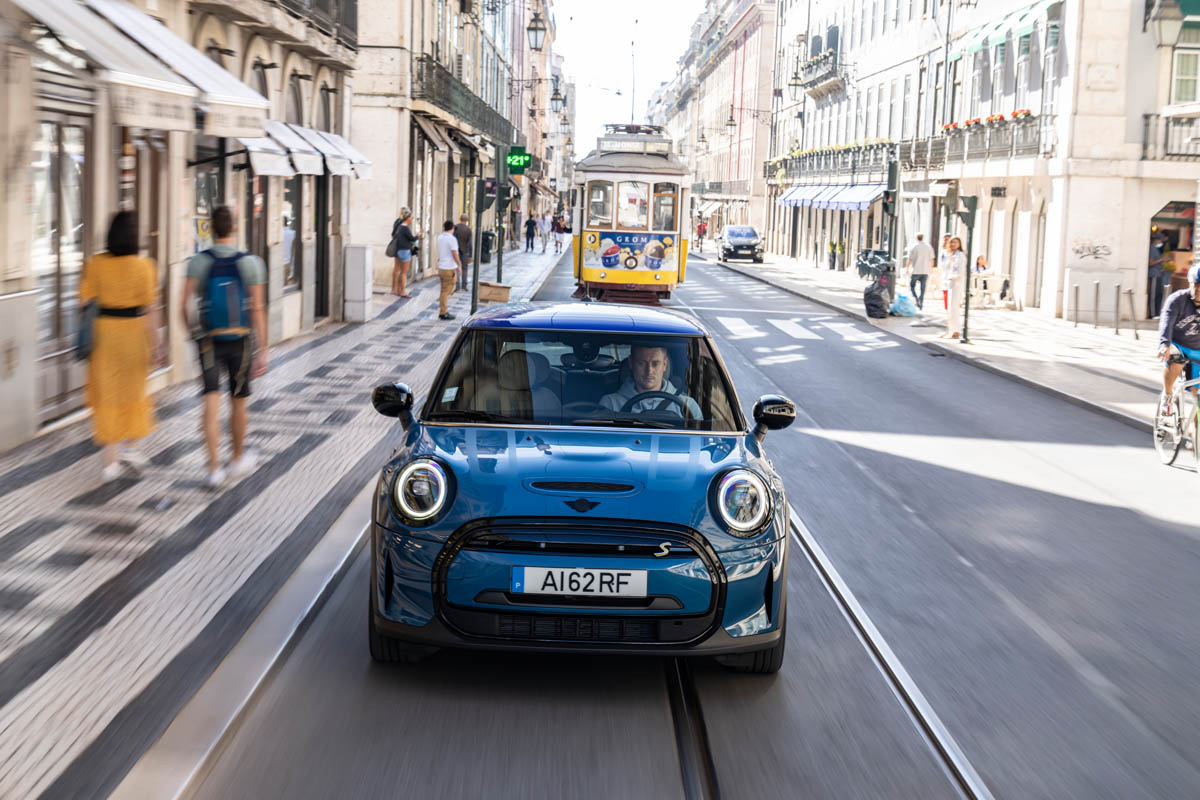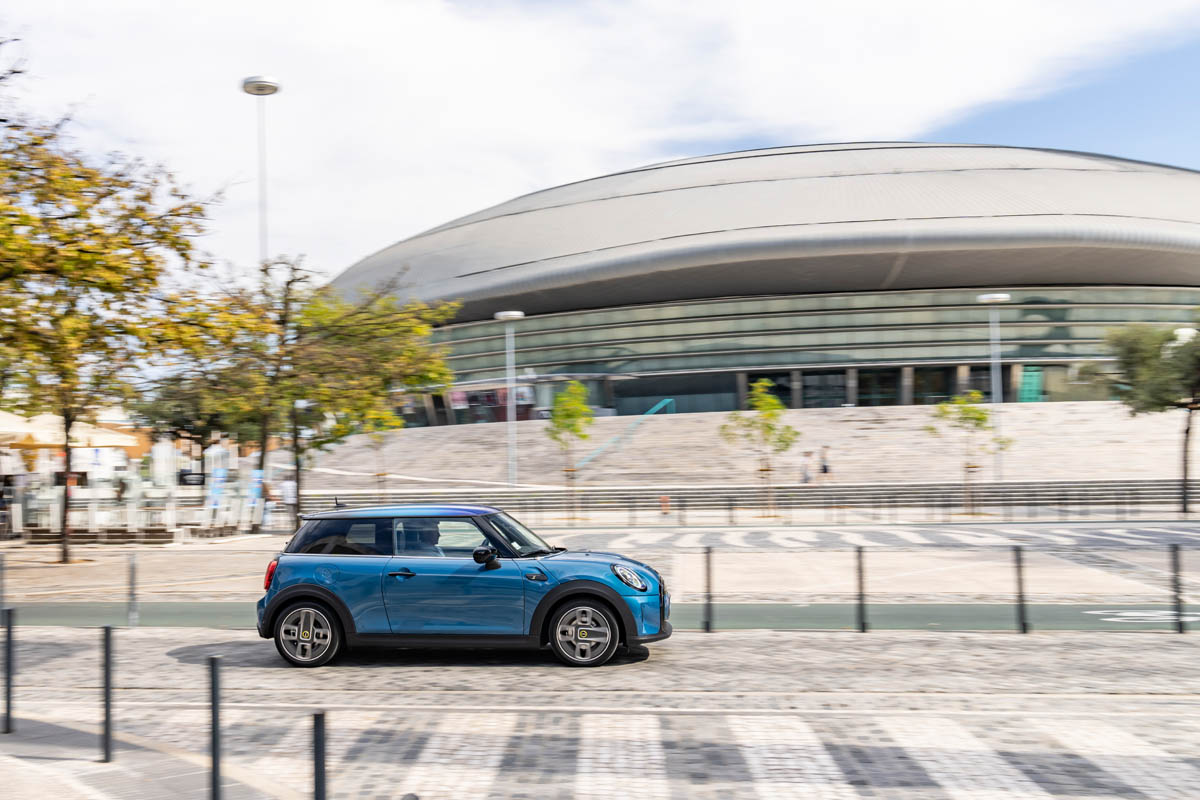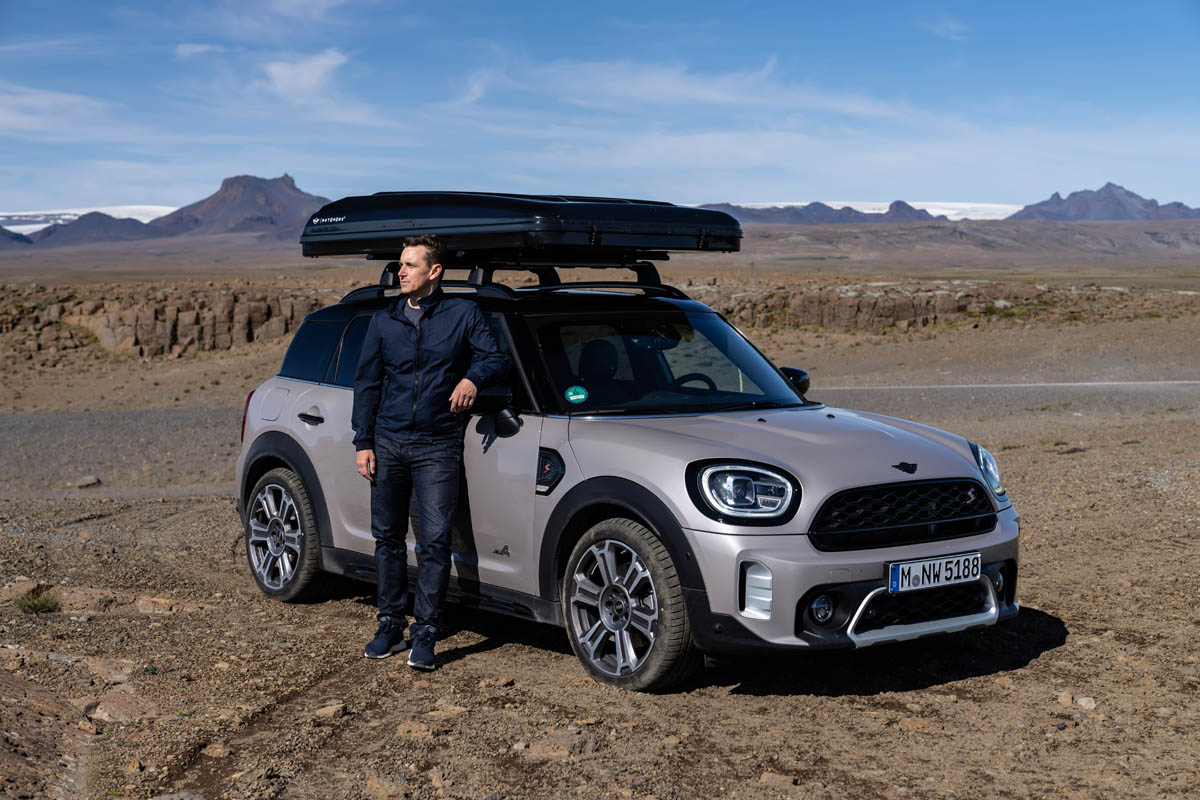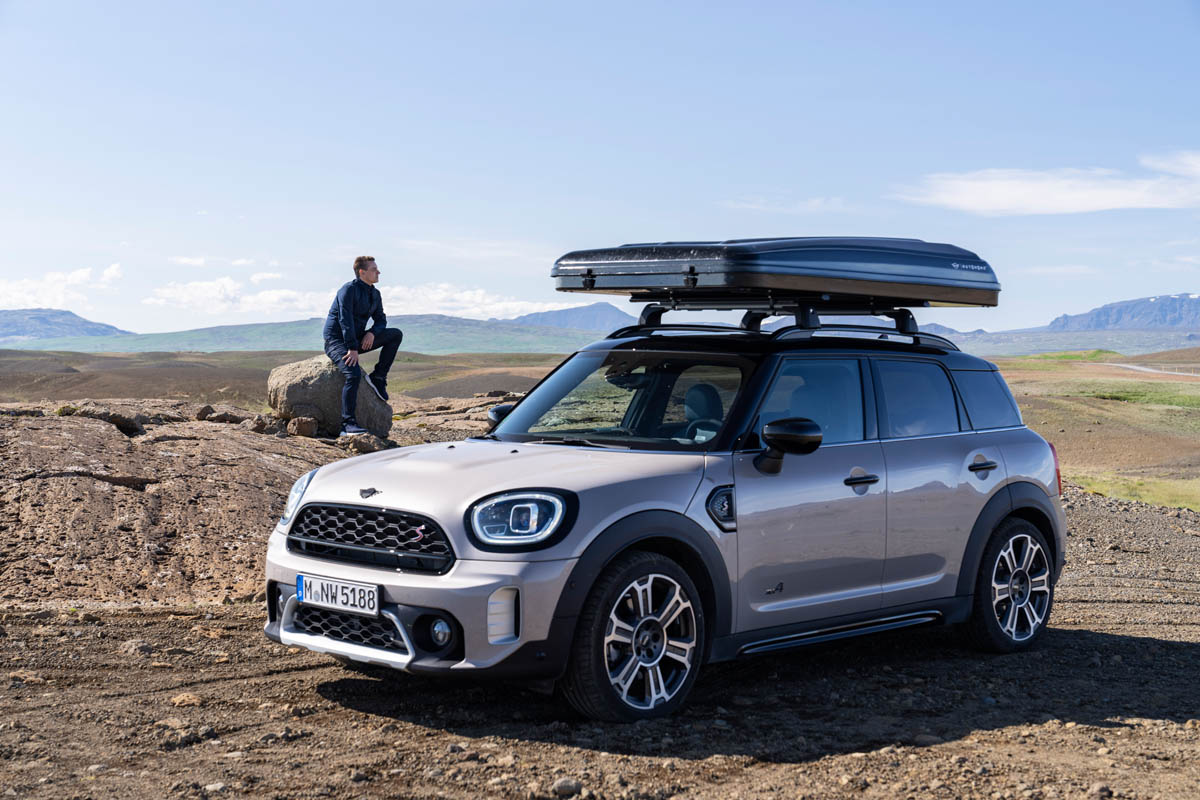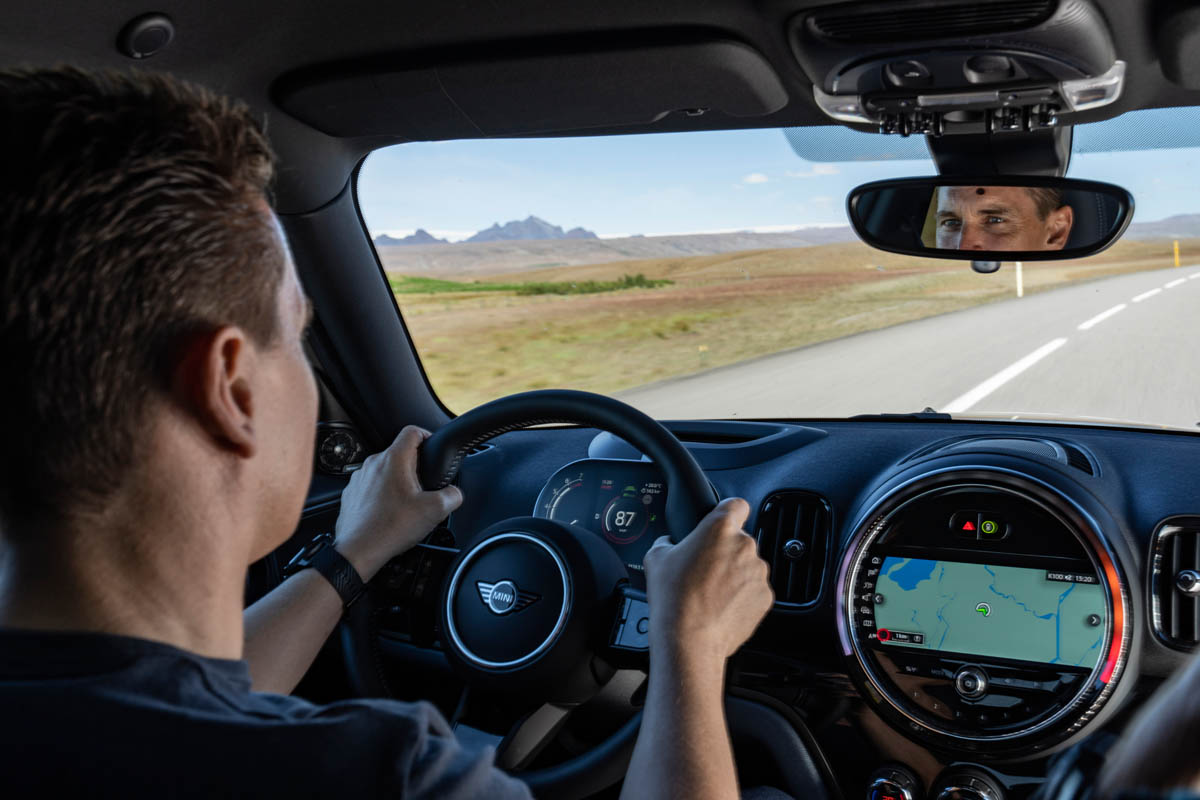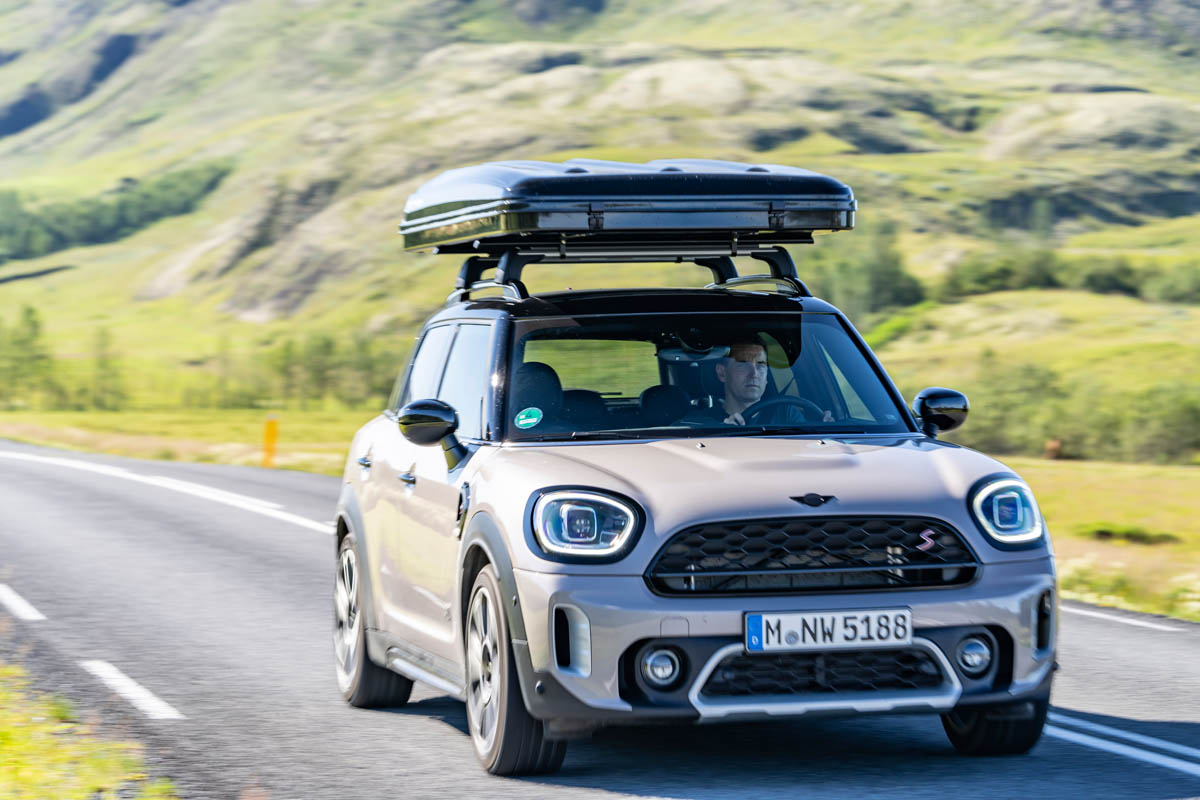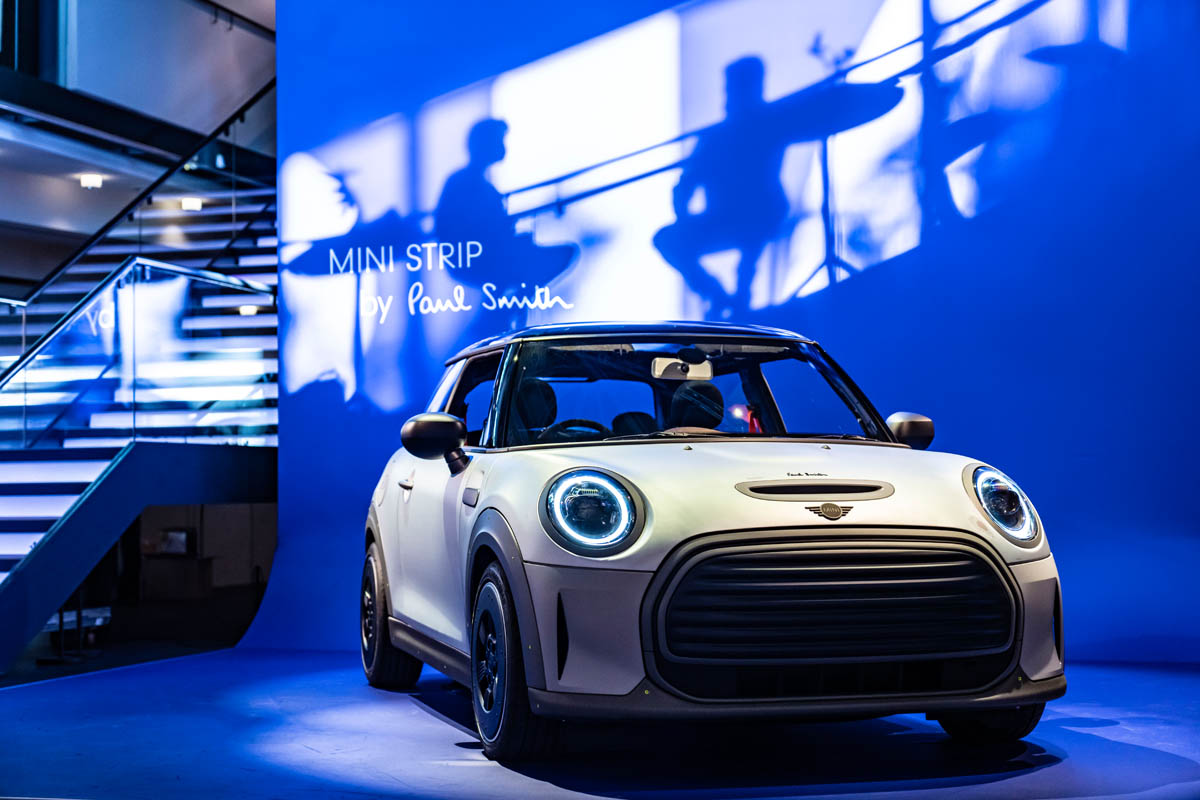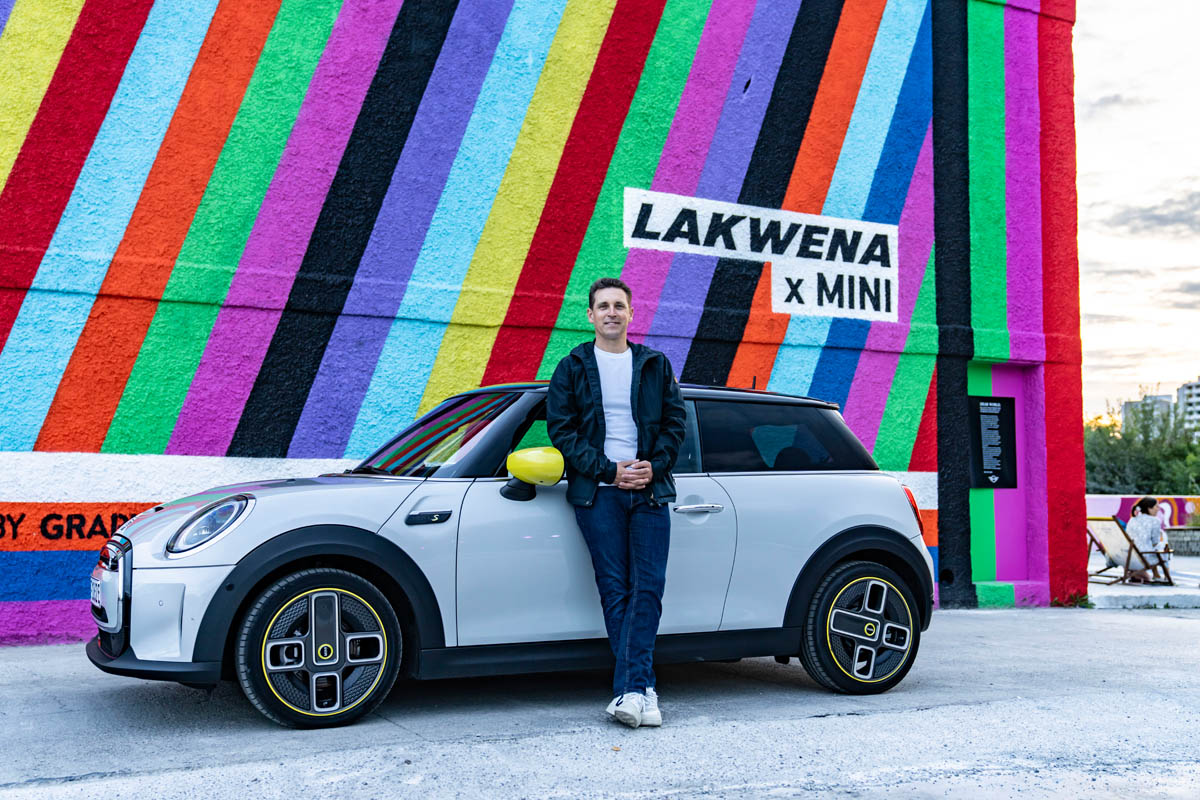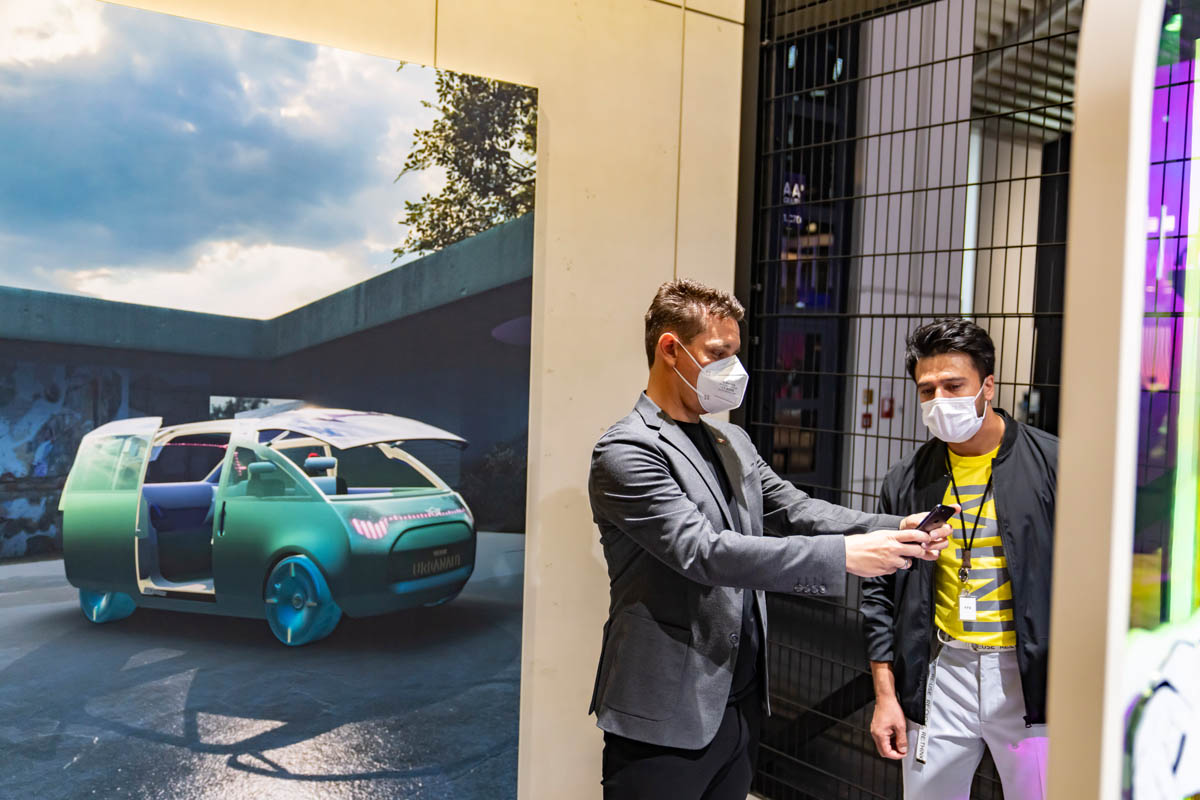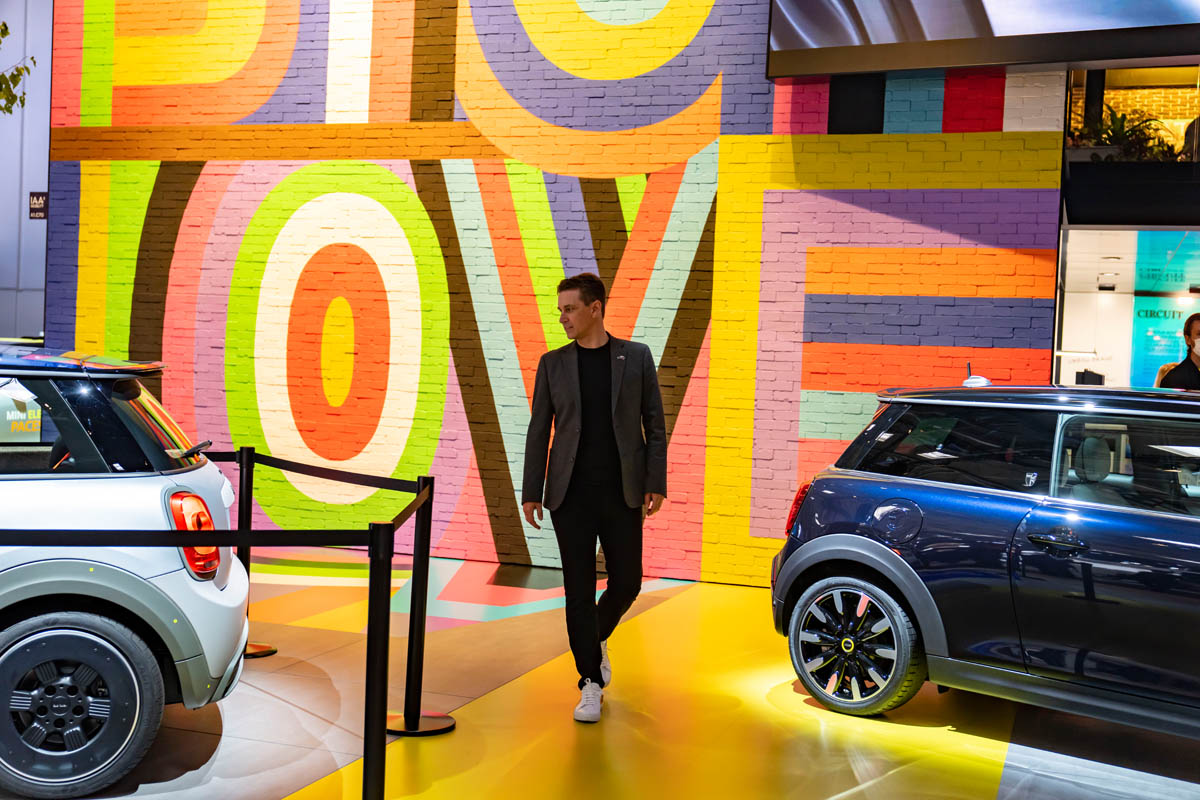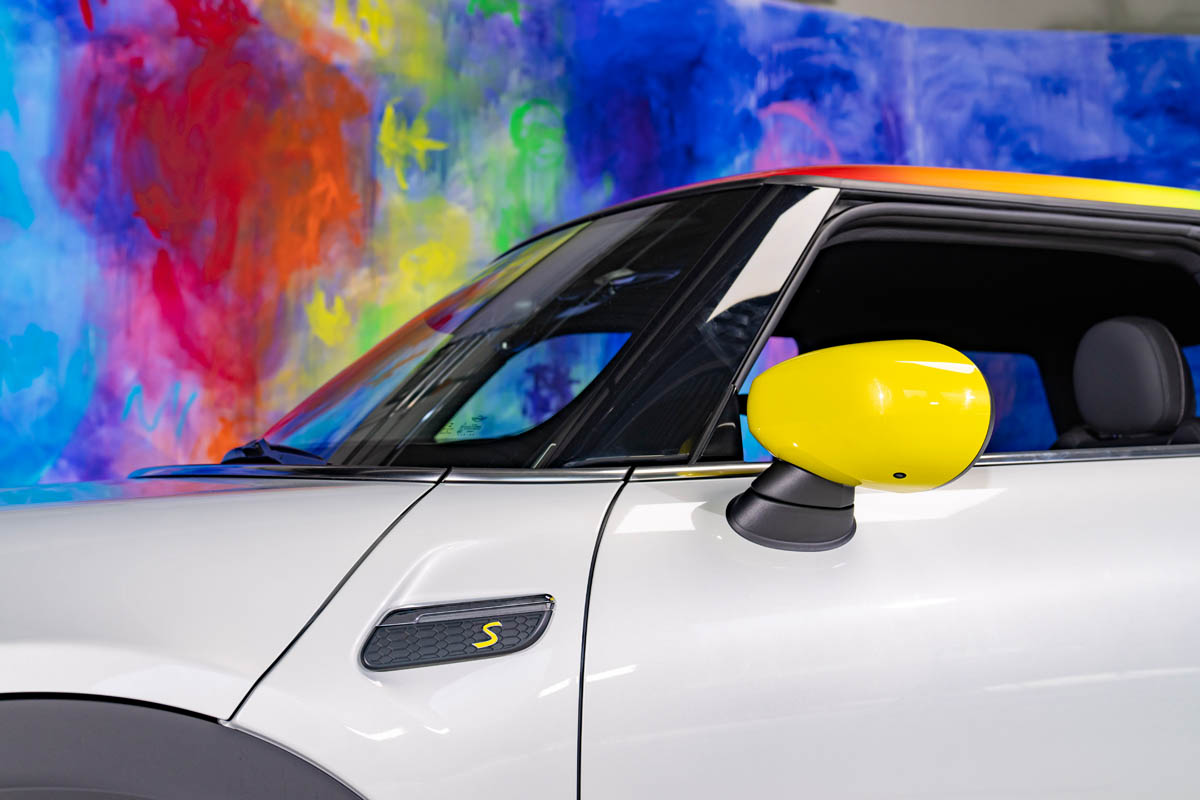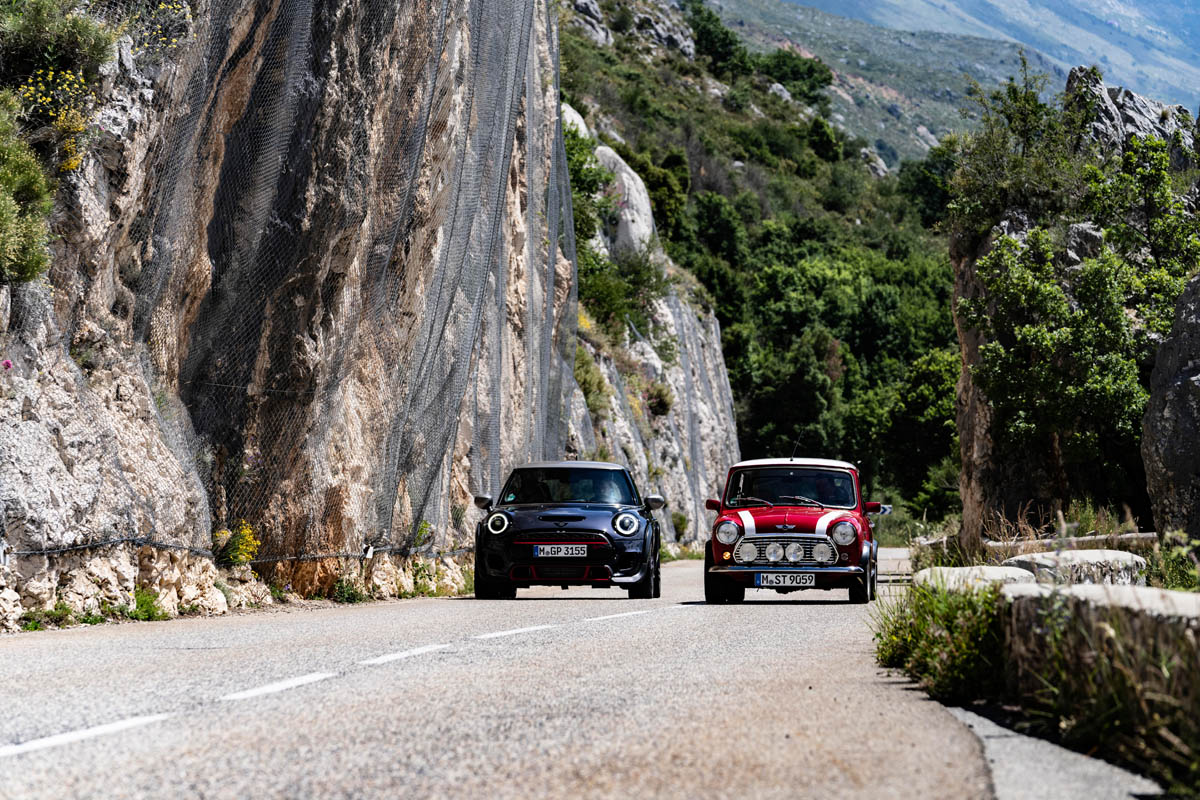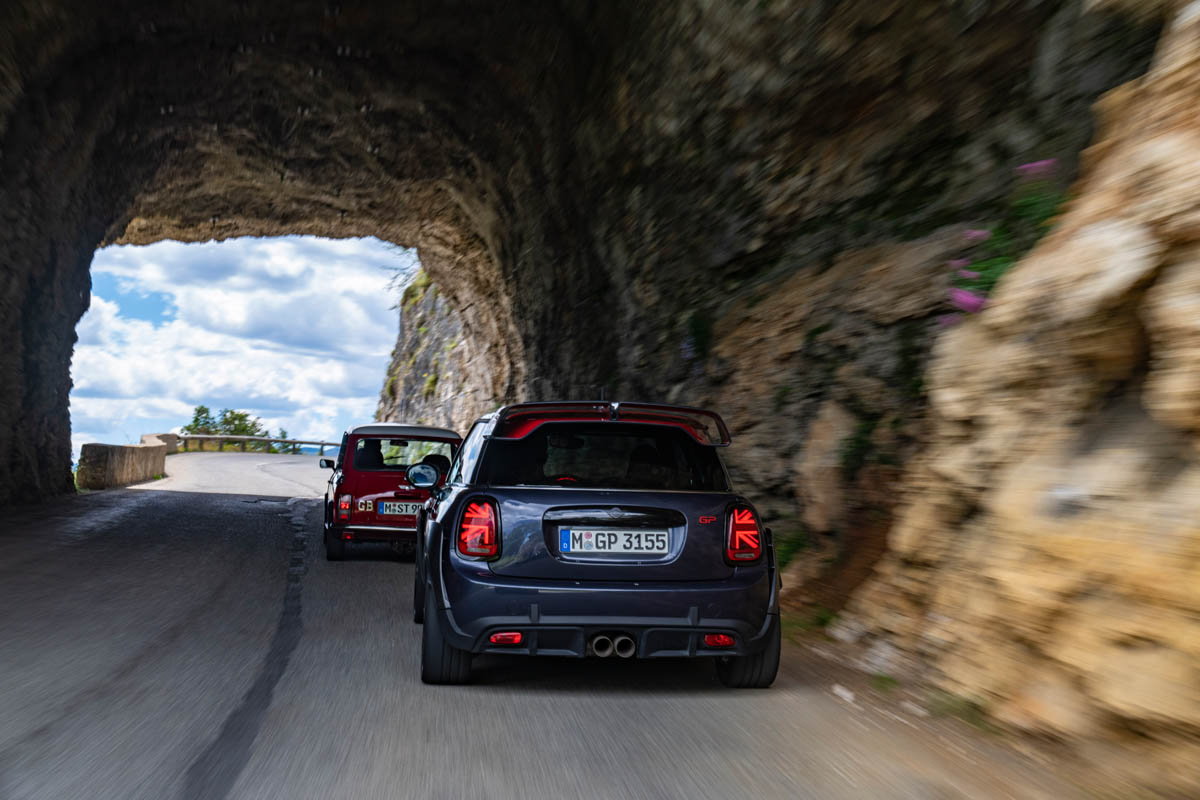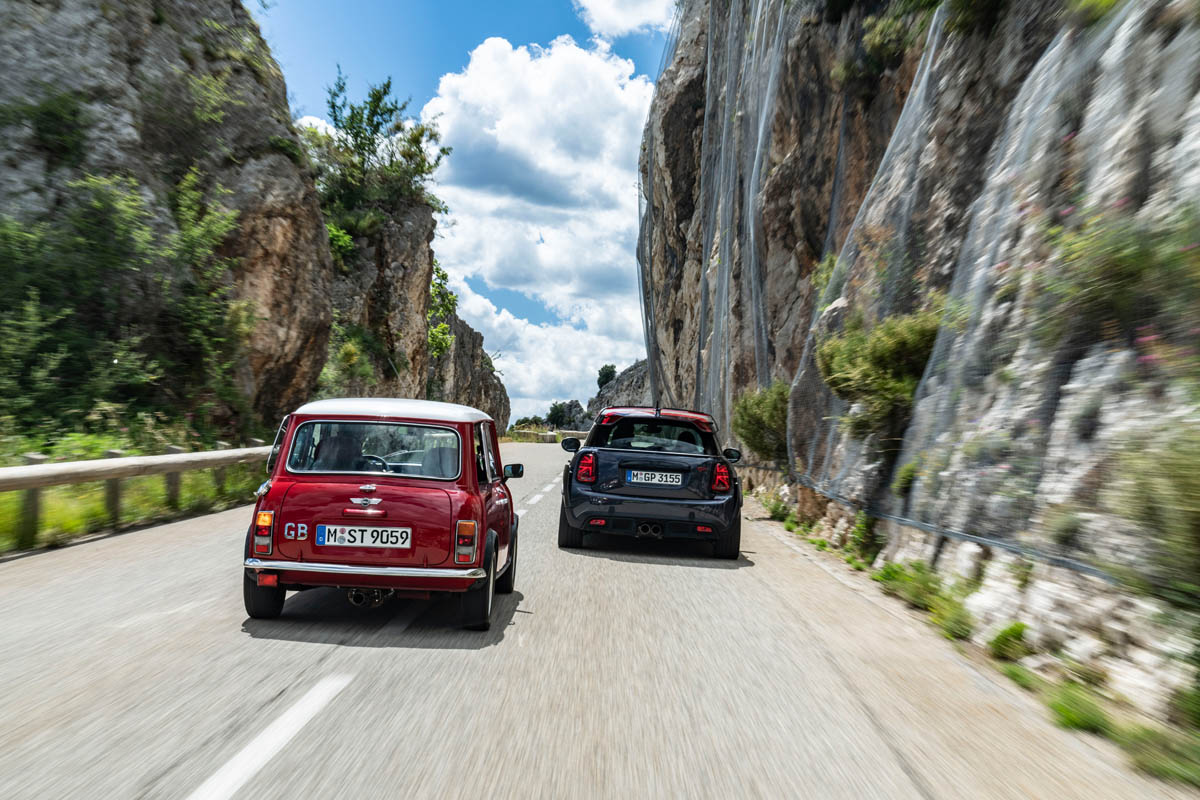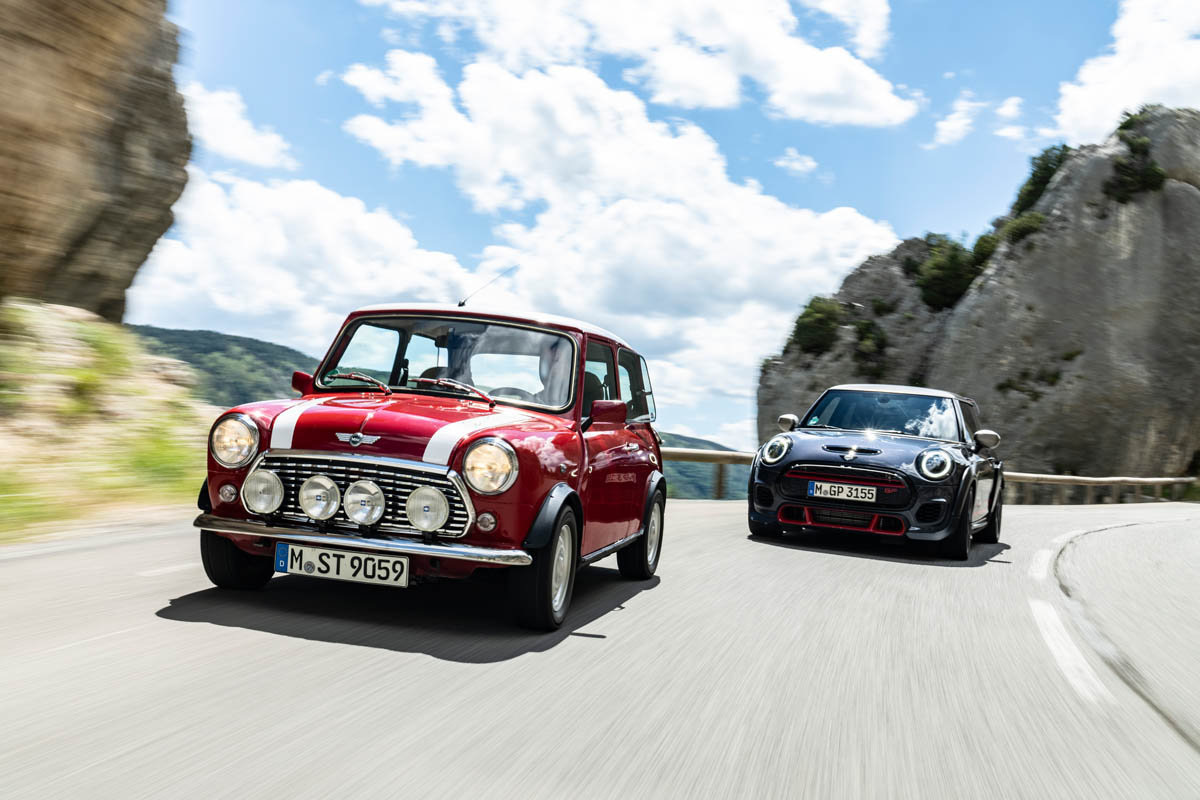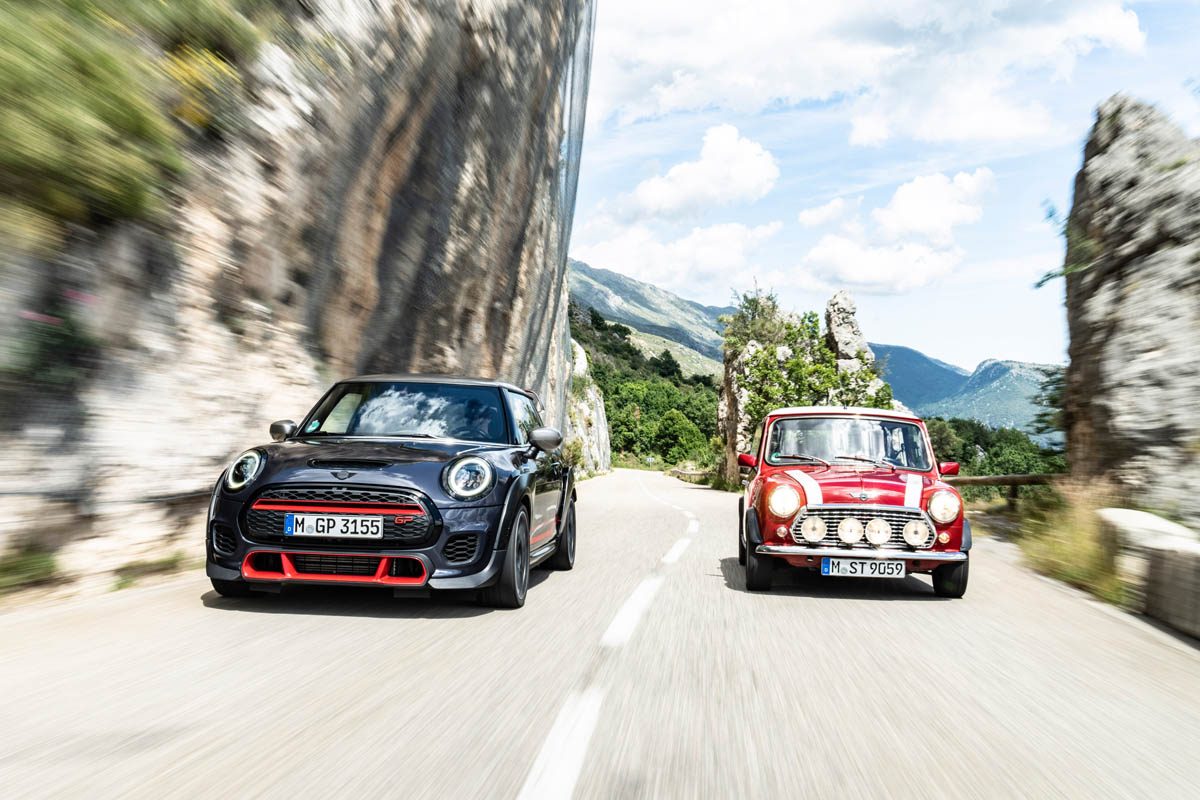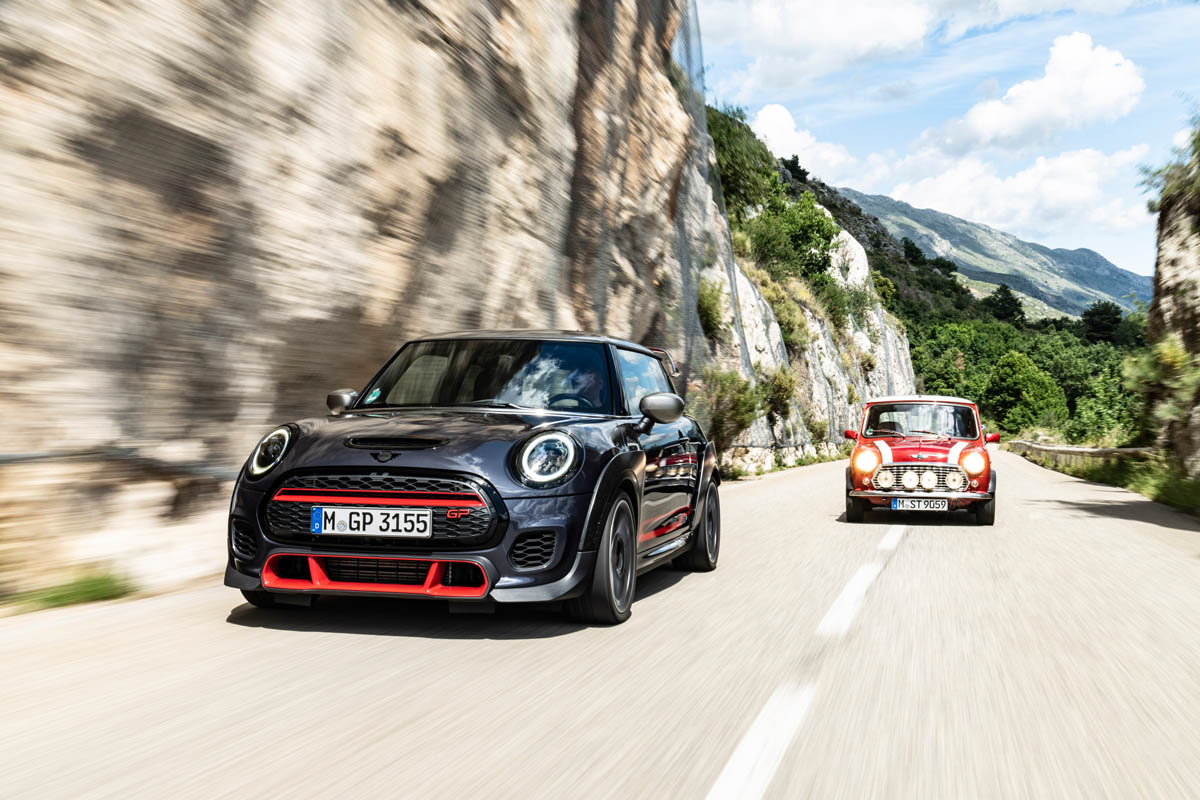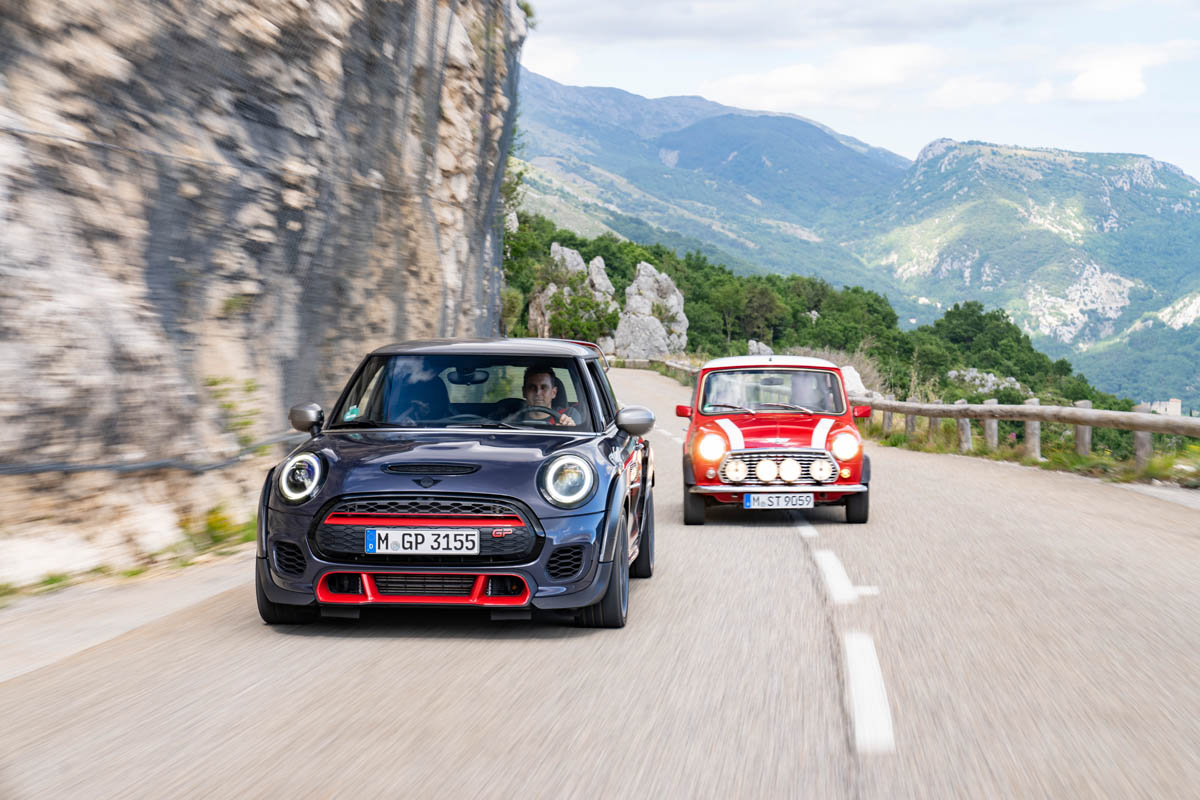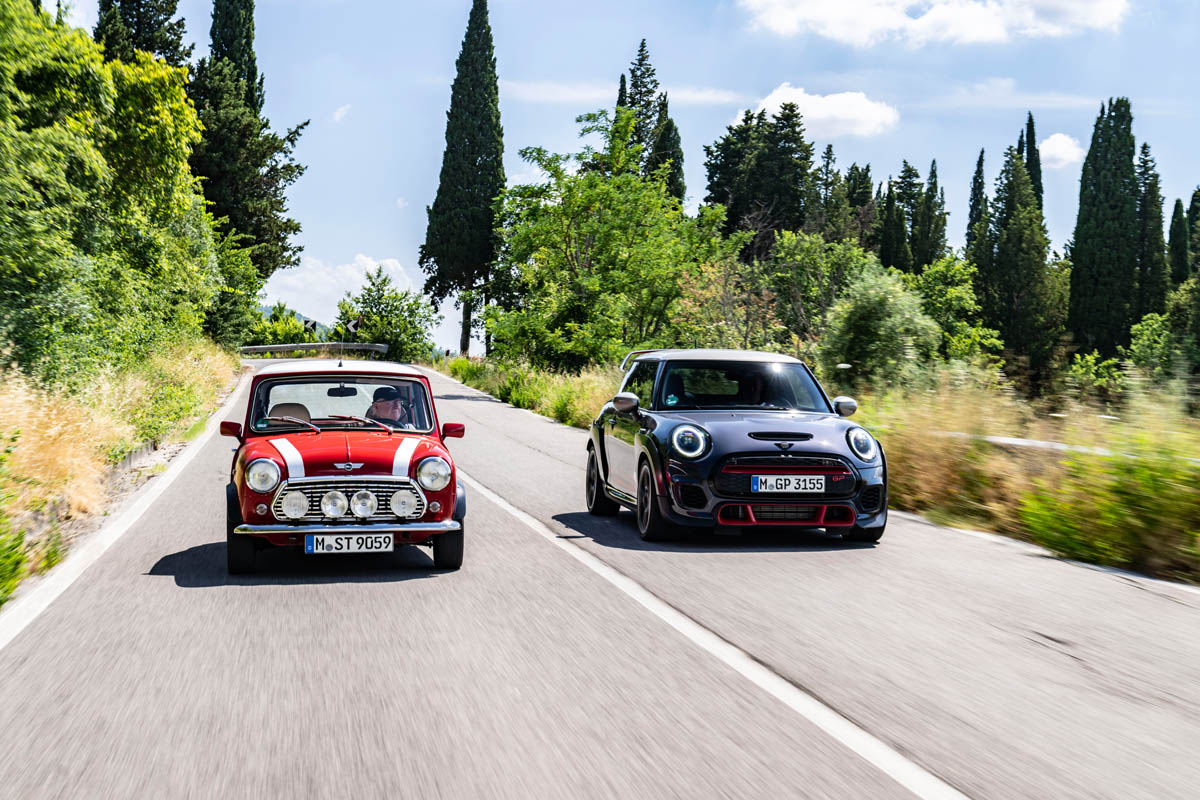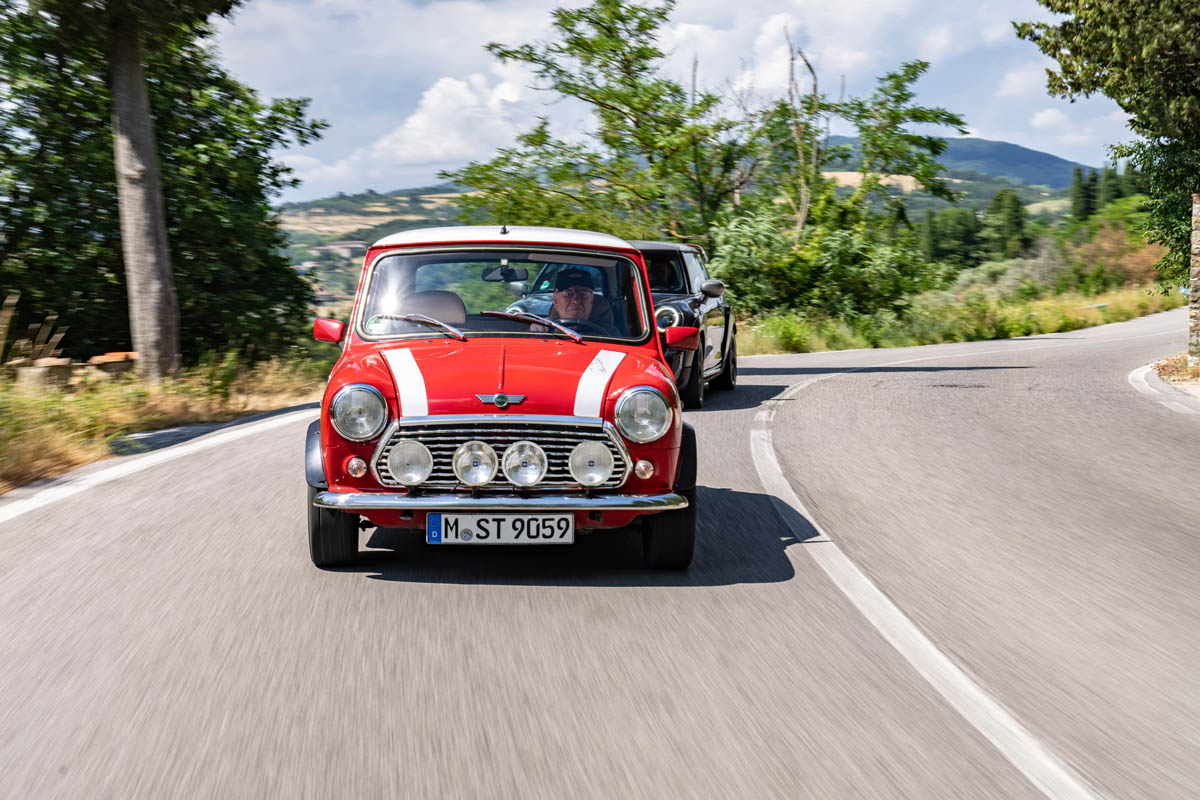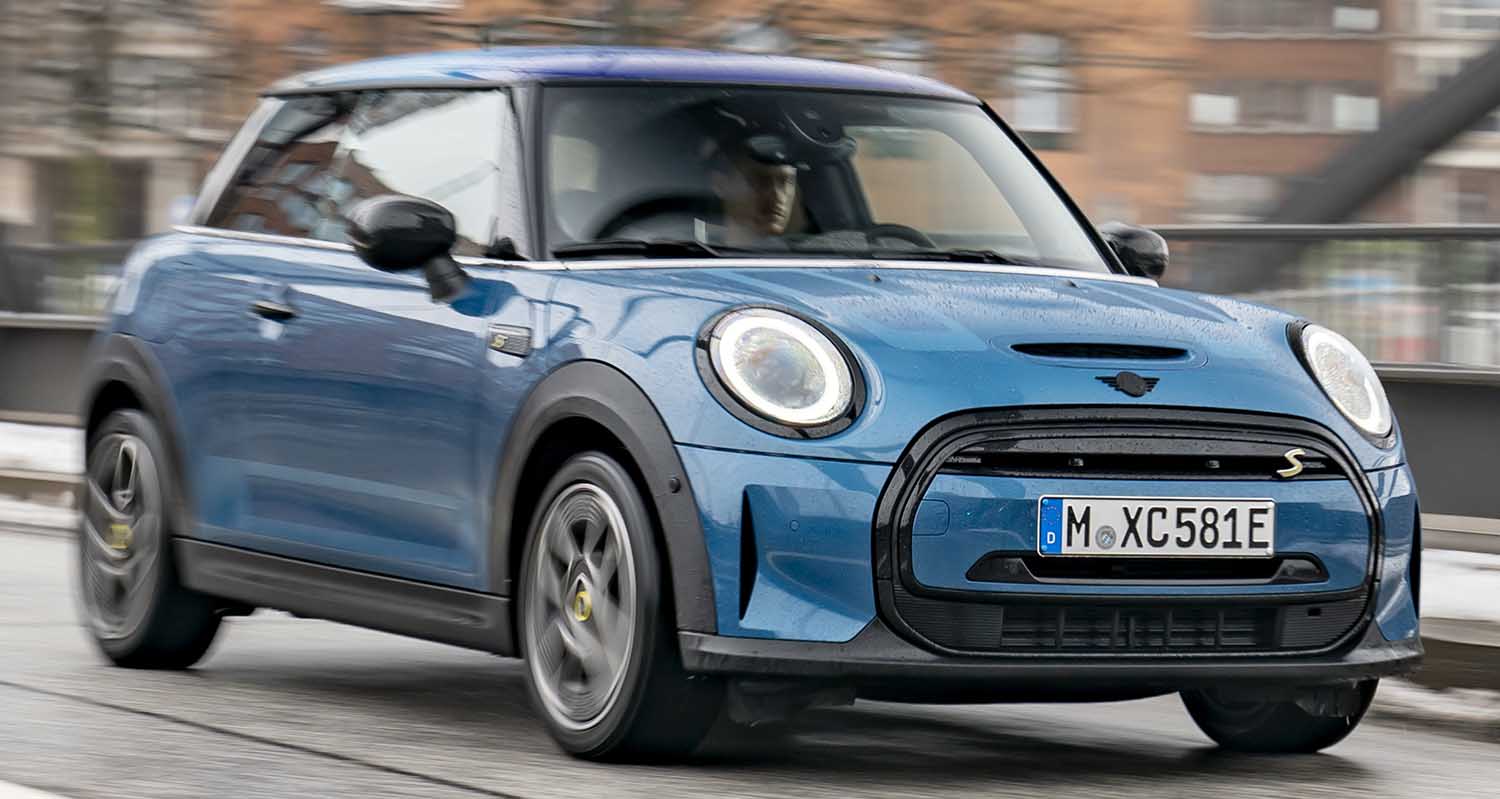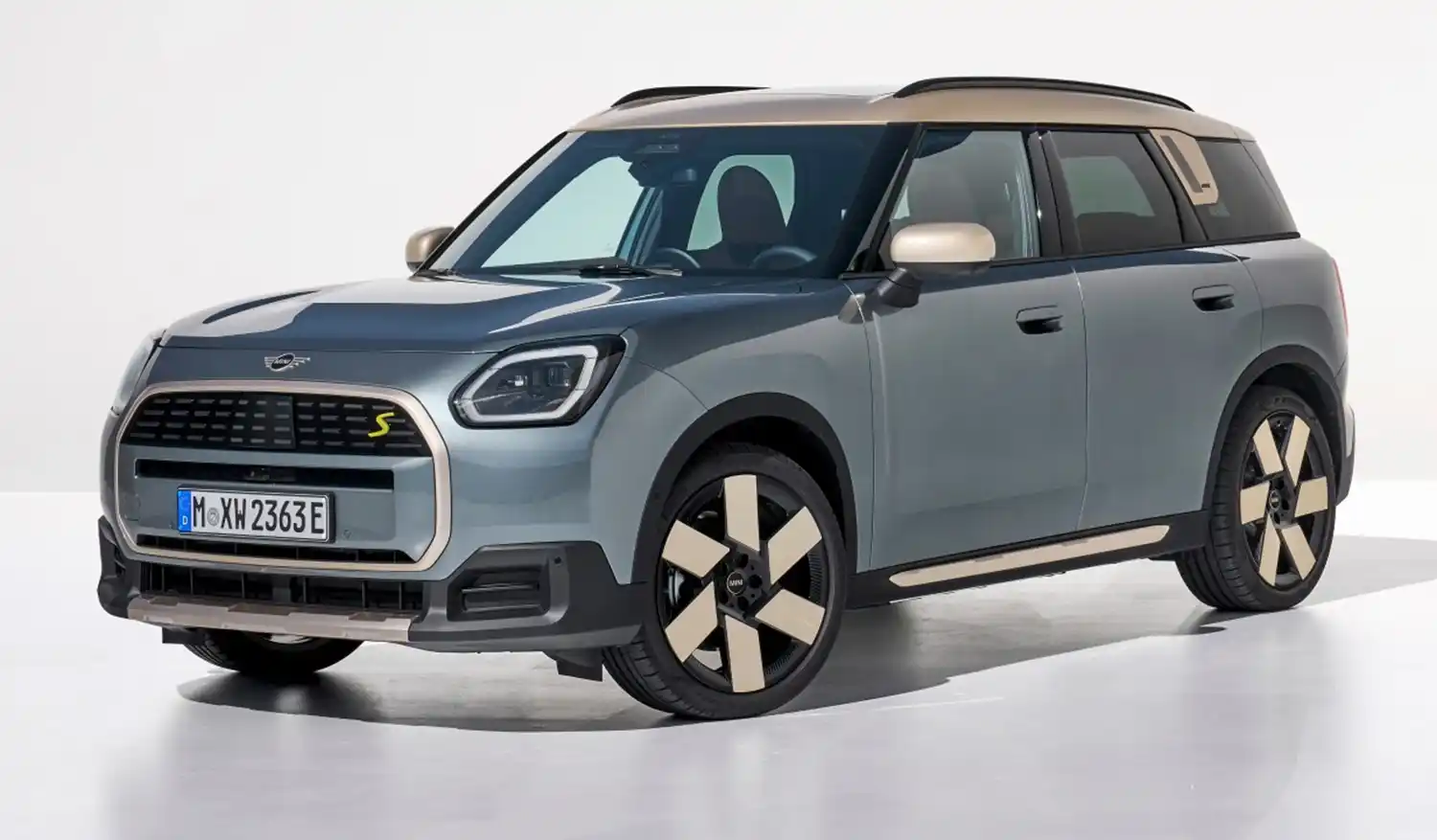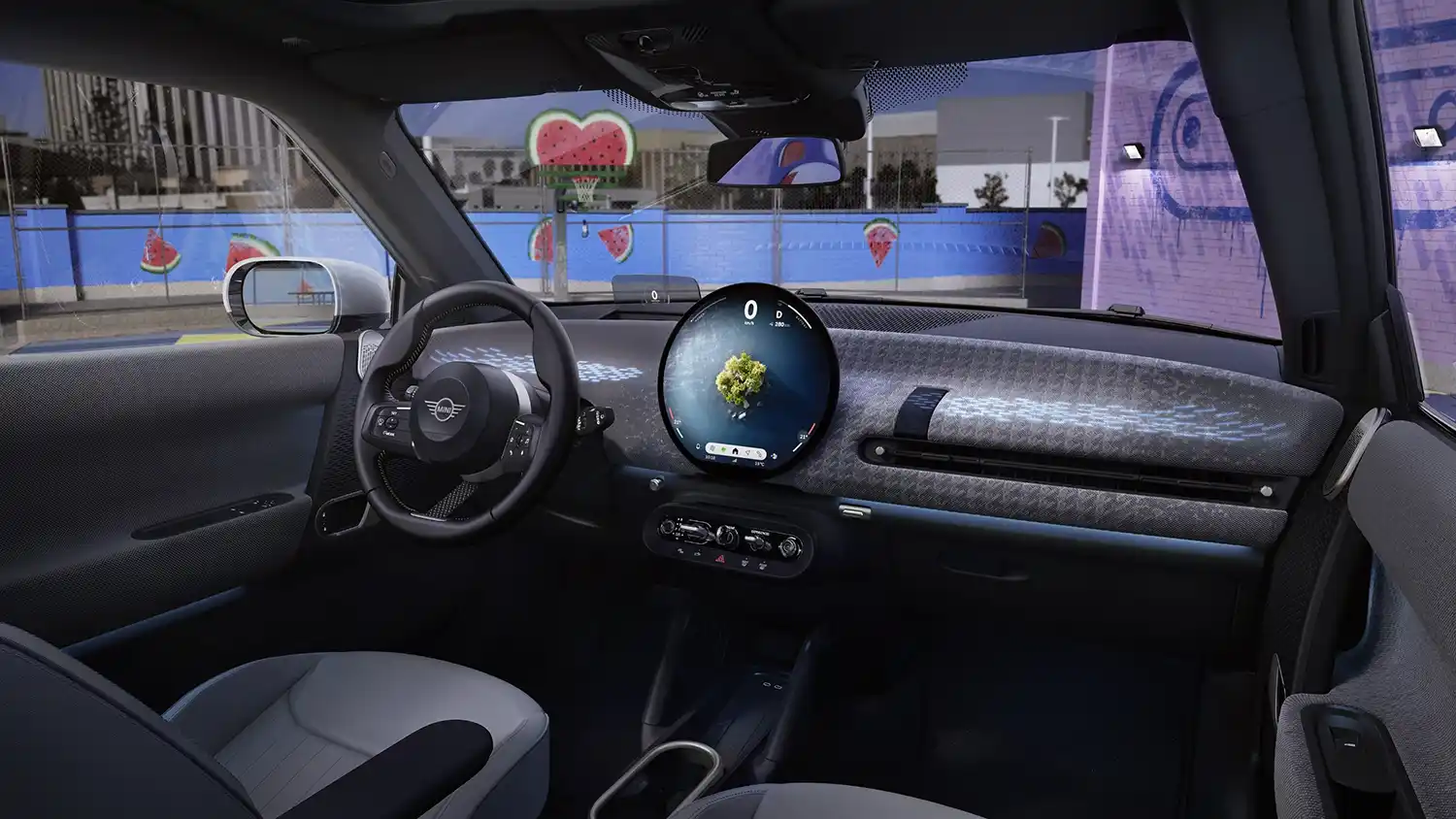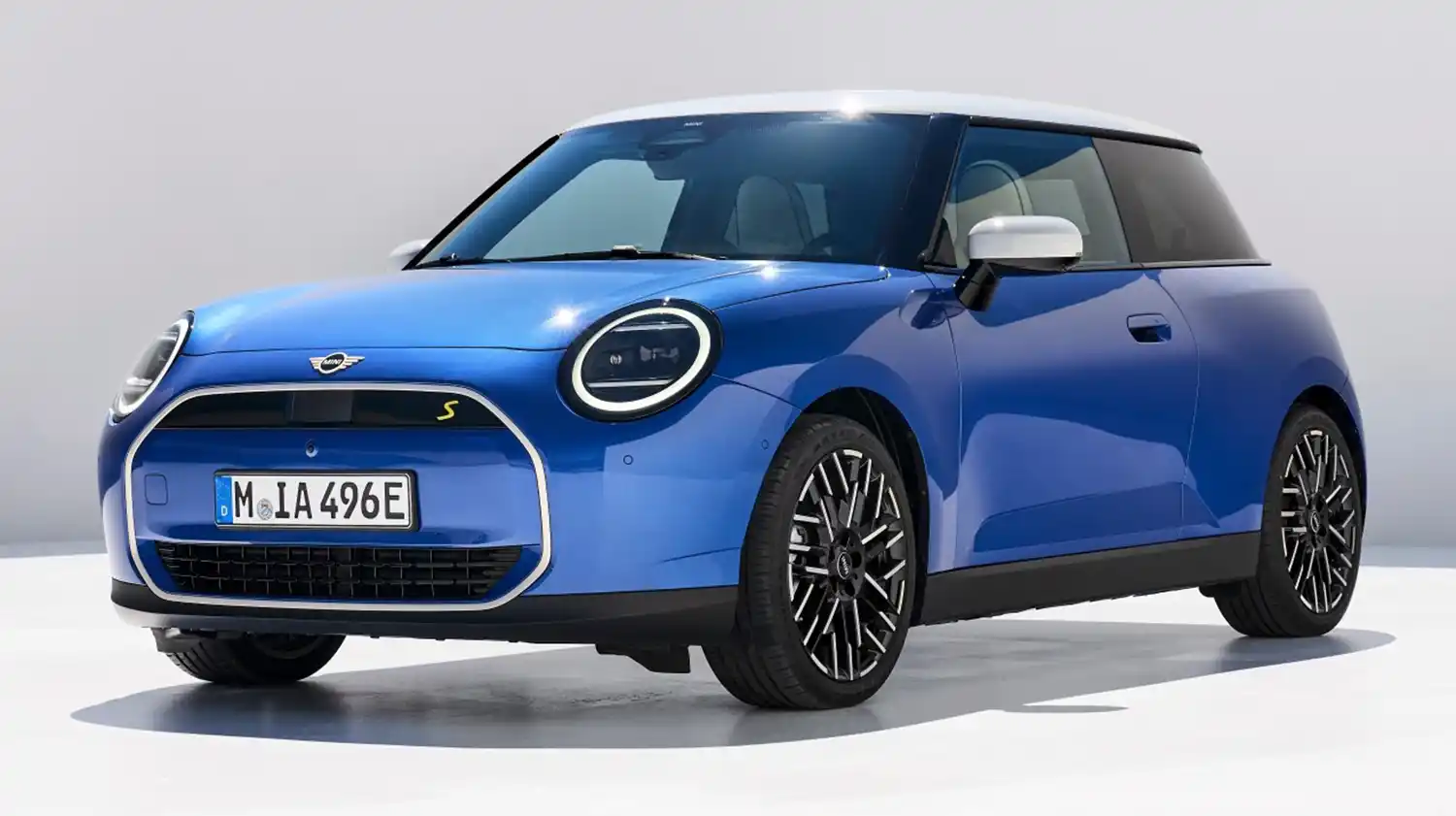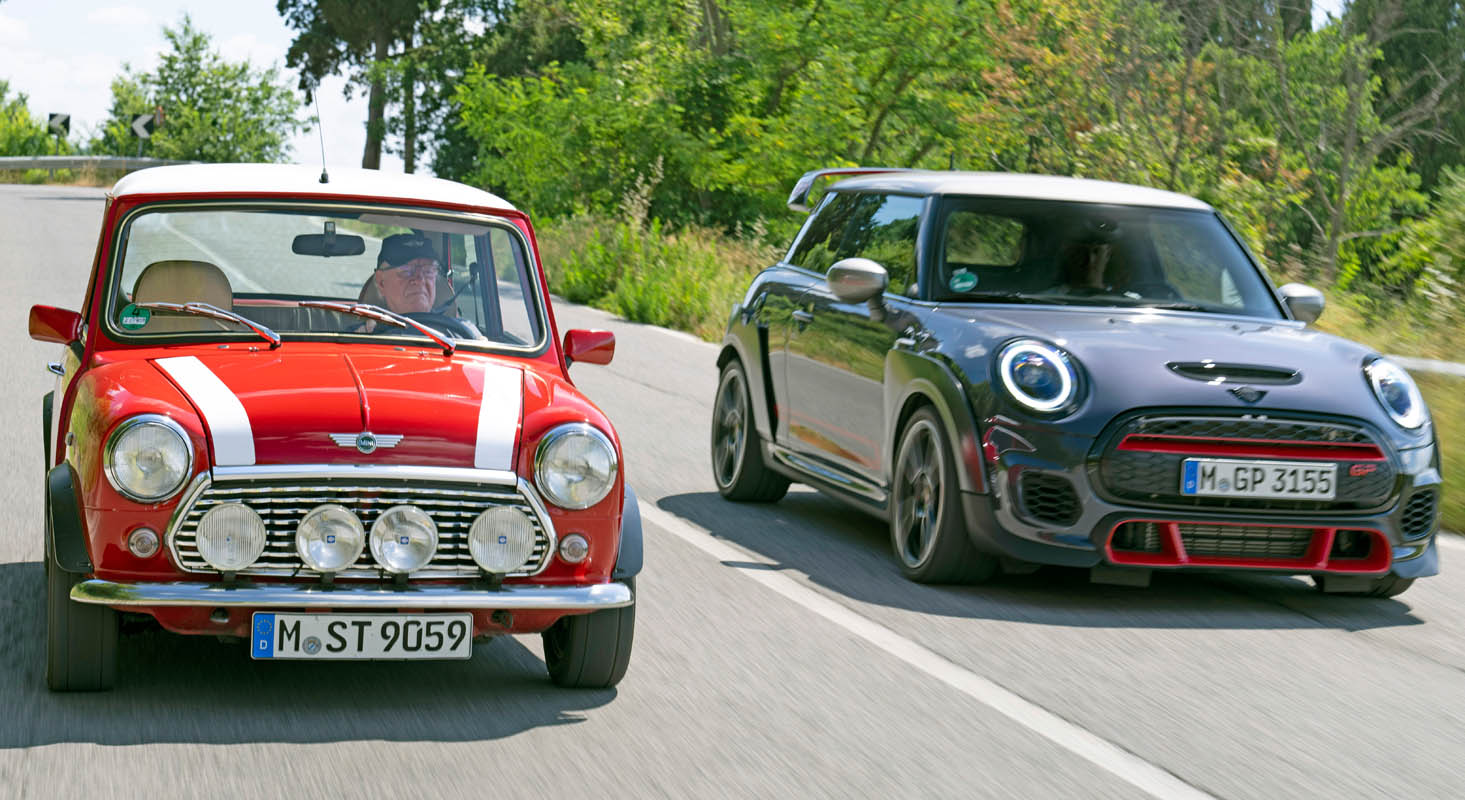
Blue-skies thinking, seeing challenges as opportunities, taking the wishes and needs of individuals into account openly and unconventionally – all these facets are firmly anchored in the tradition of the MINI brand. MINI is now charting the course for the future on the platform of this self-assured mindset.
INTRODUCTION.
Blue-skies thinking, seeing challenges as opportunities, taking the wishes and needs of individuals into account openly and unconventionally – all these facets are firmly anchored in the tradition of the MINI brand. MINI is now charting the course for the future on the platform of this self-assured mindset. This involves MINI taking up the current challenges in the areas of mobility, energy economy and climate protection and facing up to them with independent solutions for the driving fun of tomorrow that is so typical of the brand. The strategy developed for this is based on the campaign slogan BIG LOVE. This symbolises the close commitment of the brand to the fundamental natural requirements of our planet, to human beings in all their diversity, to technological progress and to profitable growth as a manufacturer of premium cars.
The classic Mini was the ideal answer for contemporary issues of the time. It was developed during the era of the Suez oil crisis and was primarily an economical car that took a creative approach to space, occupied a minimal amount of space on the road and fitted into tiny parking spaces in urban centres. The classic Mini had a small footprint but offered enough space for four people and their luggage. Its revolutionary vehicle concept helped the pint-sized car to achieve its status as a classless car, which boasted a broad community of enthusiasts for unique driving fun all over the world. For the past 20 years, the modern MINI has been transferring these principles to the premium segment of small cars. Sustainability, social diversity, a spirit of innovation and the opportunity to tap into new target groups and markets are therefore elementary strengths of the brand. MINI is deploying these characteristics to meet the current challenges in the area of urban mobility and adopts a confident approach.
A clear acknowledgement of sustainability is expressed in a continuous reduction of the CO2 footprint for each car over the entire production lifecycle. This encompasses the supply chain and the exclusive use of green electricity in production. Further contributing factors will be complete electrification of the model range by the early 2030s and a steadily increasing proportion of natural and recyclable materials used in the vehicles.
There is much more to the social responsibility being taken on by MINI. The classless car of yesteryear has long become the ideal vehicle for a diverse community. Male and female MINI drivers are individualists and at the same time part of a big community that interprets diversity as an enrichment for everybody. The team developing, producing and selling MINI models is diverse. As a manufacturer of premium cars operating on the global stage, MINI is committed to social diversity and supports initiatives that promote tolerance and an open society. The extent to which MINI feels committed to the positive zest for life of people is also demonstrated by a further commitment. MINI progresses solutions through the accelerator URBAN-X which improve life where the majority of people live: in towns and cities.
MINI is working up fresh ideas on the design of urban mobility in the future. Alongside innovative vehicle concepts such as the MINI Vision Urbanaut, this entrepreneurial approach includes pioneering developments in the area of digital services and products. Consequently, the User Experience associated with the use of the display and control system of MINI makes a major contribution to the driving fun so typical of the brand. Seamless integration of their smartphones empowers MINI customers to remain fully connected with their digital life while they are in their car. Furthermore, the MINI App is morphing into a community platform that not only deepens the relationship between driver and car but also connects MINI fans with each other.
“MINI was always the answer to very special challenges for individual mobility. And the willingness to rethink the status quo defines the brand to the present day,” commented Bernd Körber, Head of MINI. “Alongside electromobility, the development of new target groups and sales markets is a key factor for the future of MINI.” Starting as early as 2023, MINI is presenting a new generation of all-electric models. Two of the models developed from the ground up for pure electric mobility are being produced in China. Local production offers MINI optimised opportunities as a provider to participate more extensively than before in the dynamic growth in the Chinese automotive market. From 2023, the successor to the current MINI Countryman will be built at the BMW Group Plant Leipzig, powered by an electrified drive and with a combustion engine. All other MINI models will be produced at the MINI Plant Oxford, which remains the heart of MINI production. The United Kingdom will continue to be the home of the MINI brand.
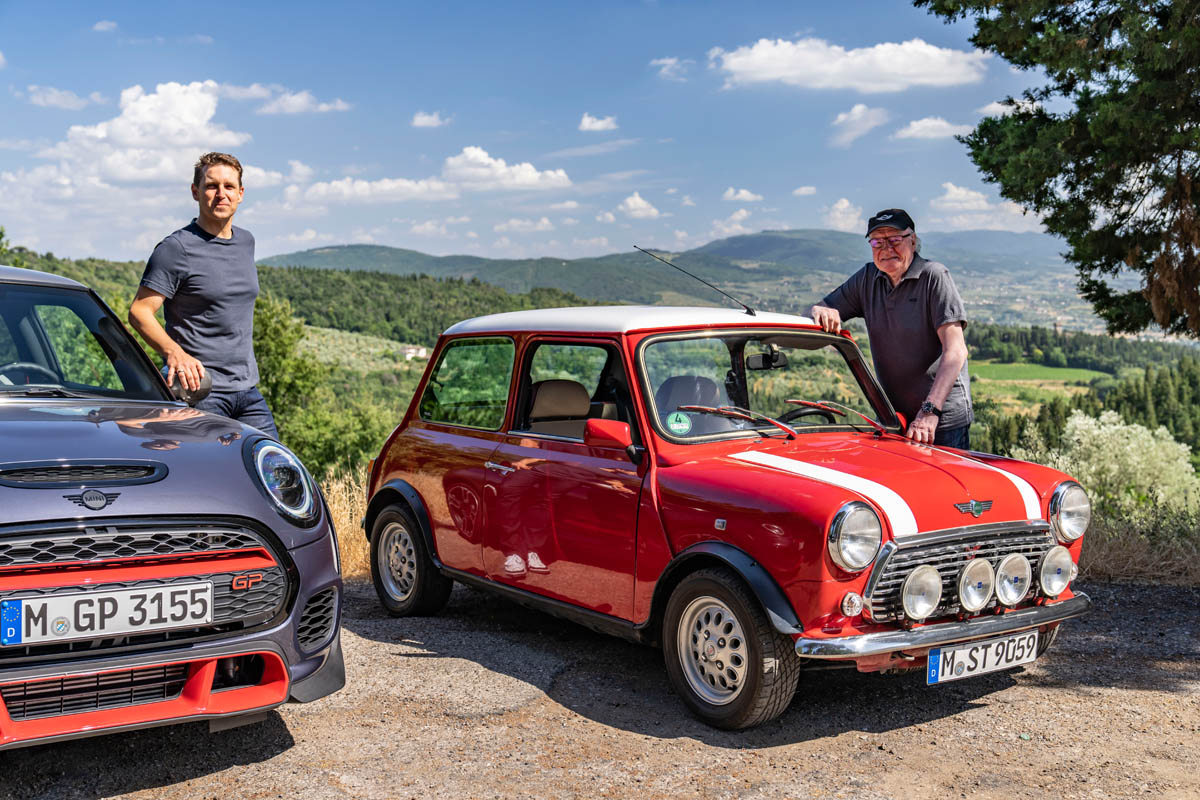
2. BIG LOVE FOR THE PLANET. THE MINI STRATEGY FOR CONSISTENT SUSTAINABILITY.
Anyone selecting MINI will always be opting for sustainability. The principle of achieving more with less is part of the brand’s tradition. Way back in 1959, the designer of the classic Mini, Alec Issigonis, showed how effective and sustainable a car can be if it has a footprint on the road with a length of slightly over three metres while providing transport for four passengers and their luggage from A to B. The revolutionary design principle with the four-cylinder engine fitted crosswise at the front and the wheels positioned at the corners of the car also resulted in exceptionally agile driving characteristics at a low fuel consumption.
As a brand of the BMW Group, MINI is also dedicated to the strategic sustainability goals of the company. In 2020, the BMW Group developed its own agenda, which was even more ambitious than the goal of the Paris Climate Agreement in 2015, to limit global warming to less than two degrees Celsius. The company is therefore ready to meet the requirements of the EU programme “Fit for 55”, which provides for reducing the CO2 emissions of new car fleets by 55 percent from 2030. The contribution by MINI includes consistent electrification of the model range. As early as the beginning of the 2030s, MINI will be an all-electric brand.
Consistent CO2 reduction over the entire value chain.
In order to achieve this objective, the CO2 footprint will be consistently reduced over the entire value chain, including production and upstream supply chain. By 2030, the BMW Group is planning a per-vehicle reduction of CO2 emissions in this area by at least 40 percent compared with 2019. Over the long term, the BMW Group has defined the objective of establishing a climate-neutral business model over the entire value chain by the year 2050.
Binding environmental standards ensure that the CO2 emissions within the supply chain will undergo a 20 percent reduction by the year 2030. The fact alone that the suppliers involved in the production of battery cells for vehicles powered by an electric drivetrain use exclusively green electricity means that over the coming ten years around ten million tons less CO2 will be released into the atmosphere. MINI uses comparatively small energy storage systems for the design of high-voltage batteries. These ensure a range appropriate for urban mobility while simultaneously not impairing electricity consumption and the agility of the vehicles through excessively high weight. Transparent procurement monitored by the BMW Group ensures that the raw materials necessary for the construction of high-voltage batteries are compliant with environmental and social standards. The high-voltage batteries developed for electrically-powered models of MINI secure a long lifetime. After their application in the car, they can also be used in stationary storage systems for buildings also over a very long period. The storage units only have to be recycled after this repurposing and secondary use has finished. At the present time, more than 90 percent of the raw materials used in the batteries can be recycled.
Also after the year 2030, a reduction of CO2 emissions by 80 percent is projected in the production of each vehicle. This means that the sustainability standards already achieved in BMW Group plants to date will be once again ramped up. At present, each MINI is already manufactured with a carbon-neutral footprint. Use of 100 percent green electricity at the MINI Plant Oxford makes a contribution to this. A proportion of this electricity is generated on site locally. One of the biggest photovoltaic generation systems in the United Kingdom has been installed on the roof of the production facilities. Around 11 500 solar cells with an output of around three megawatts generate electricity from solar energy and thereby save around 1 500 tons of CO2 each year. 18 LNG-operated trucks are also being deployed in Oxford. They are powered by organic Liquid Natural Gas and thereby contribute to additional CO2 reduction in the production process. The successor to the current MINI Countryman will be manufactured at the site of the BMW Group Plant Leipzig from 2023 onwards and wind turbines located here generate green electricity for vehicle production.
By 2030, a reduction of at least half of the CO2 emissions compared with 2019 is projected for each vehicle and each kilometre driven. The electrification of the drivetrain plays a key role here. At an early stage, MINI took on a pioneering function in the development of local emission-free premium mobility. The field trials launched with a test fleet of 600 MINI E cars in 2009 yielded important findings about the use of an all-electric drive under practical, real-life working conditions in everyday urban traffic.
The brand already has two models in its product range with plug-in hybrid model MINI Cooper SE Countryman ALL4 (combined fuel consumption: 2.1 – 1.7 l/100 km, combined electricity consumption: 15.5 – 14.8 kWh/100 km, combined CO2 emissions: 47 – 39 g/km in compliance with WLTP) and the all-electric powered MINI Cooper SE (combined fuel consumption: 0.0 l/100 km, combined electricity consumption: 17.6 – 15.2 kWh/100 km, combined CO2 emissions: 0 g/km in compliance with WLTP) that permit local emission-free driving fun. If the high-voltage battery of the MINI Cooper SE is charged with energy from the conventional EU electricity mix, the CO2 footprint is reduced by around 36 percent in comparison with a like-for-like MINI 3-door car powered by a petrol engine. If electricity is only used from renewable sources, the reduction is even as much as up to 70 percent.
The MINI Cooper SE Countryman ALL4 and the MINI Cooper SE meanwhile make up 15 percent of the total global sales of MINI. This proportion is projected to increase to 50 percent by 2027. At the beginning of the 2030s, MINI will only have all-electric powered models in its range.
Innovative materials, greater use of secondary raw materials.
Engineers at MINI are always finding new ways to provide maximum protection for natural resources in their selection of raw materials. For example, the proportion of secondary raw materials used in each vehicle is gradually being significantly increased for this purpose. By comparison with primary materials, this approach once again permits a substantial reduction of CO2 emissions in production. An increasing proportion of secondary aluminium is another measure that will be used in future.
Recycled materials will also be employed in areas such as the roof liner, and for upholstery materials, seats, foot mats and floor coverings. In future, natural-fibre materials and plastics obtained from recycled PET bottles will be used instead of leather. Recycled fishing nets will form the raw materials for floor mats. The potential for renewable materials is used particularly comprehensively in the study MINI Vision Urbanaut. The entire interior is free of leather and chrome. Instead, natural materials like cork are used for the steering wheel and on sections of the floor, and removable covers made of knitted textile are also used. This creates a pleasant ambience in a natural way.
Tailor-made sustainability and with maximum consistency: MINI STRIP.
MINI STRIP was recently presented as an unconventional example so typical of MINI, demonstrating how creative thinking can pave the way towards more sustainability. This custom special was created in a collaboration between MINI and the British fashion designer Paul Smith. A tailor-made one of one was designed on the basis of a MINI Cooper SE incorporating the themes “Simplicity, Transparency, Sustainability”. As the name of the car suggests, this vehicle was reduced to its structural essence. Ultimately, only those elements regarded by Paul Smith as absolutely essential were used.
This consistent focus on sustainability resulted in features such as a radically reduced interior where the conventional four-part instrument panel is replaced by a large, semi-transparent component with a smoked-glass look and the customer’s smartphone takes on the function of the central instrument. Untreated panels and recycled materials from a 3D printer are the dominant feature in the exterior. Visible bolts on the mounted parts indicate that the individual components can be easily dismantled and fed back into the raw-material cycle at the end of the vehicle lifecycle.
Support for initiatives benefiting sustainability.
MINI is pursuing a large number of activities beyond the boundaries of manufacturing cars which are targeted at enhancing the quality of life and sustainability in the urban environment. These measures include, for example, cooperation between MINI and the non-profit organisation Earthwatch Europe in the United Kingdom called the “Tiny Forest” initiative. Just as a small space in MINI is used highly efficiently, MINI also supports the “Tiny Forest” initiative being implemented by the environmental conservationists. Alongside the British body-pressing plant in Swindon, MINI has commissioned the planting of around 600 trees very close to each other, which will be allowed to grow in a completely natural way. This initiative captures additional CO2 and creates a habitat for more than 500 species of animal and plant. Another “Tiny Forest” is planned at the MINI Plant Oxford in 2022.
Local initiatives are also presented on the platform MINI VOICES. These have the potential to change the world. One example of this is provided by the architect Clarisse Merlet showcased by MINI France. She developed a method of obtaining environmentally benign construction materials from clothing that cannot be recovered. Her FabBRICK start-up based in Paris produces bricks made from recycled textile waste. The Swiss start-up Umami also presented on MINI VOICES produces microgreens, which are grown in an aquaponics system. The nutritious plants form a closed-loop circulation together with fish and freshwater shrimps. They are cultivated here without any artificial fertilisers. The microgreens from the start-up are supplied to prestigious restaurants in Zurich.
3. BIG LOVE FOR THE PEOPLE. THE ENGAGEMENT OF MINI
FOR DIVERSITY AND SOCIAL RESPONSIBILITY.
MINI promotes diversity – inside and outside the MINI organisation. As an international company, community and social responsibility are a top priority at MINI. This also includes a clearly-defined commitment to diversity within the company. “We are all different, but pretty good together” – employees at MINI all over the world are cooperating successfully in accordance with this motto. MINI perceives diversity as a strength. The company is convinced that diverse teams are more creative and more innovative. They are therefore a key factor for success in competition for new markets, customers and qualified up-and-coming talent.
The approach has been firmly anchored in the DNA of MINI since its foundation in 1959. The designer of the classic Mini, Alec Issigonis, was born in Turkey in 1906 as the son of a mother originating from Bavaria and a British father of Greek origin.
Open, free of prejudice and respectful corporate culture.
MINI – building on the diversity strategy of the BMW Group – has set up the MINI Diversity Programme in order to continue to strengthen the awareness for all dimensions of diversity within the company and to exert a positive impact on the corporate culture. At MINI, this means living and promoting a corporate culture, in which all employees are treated with equal value and respect, regardless of their origin, identity, age, sexual orientation, and whether or not they have a disability. This is all about creating an optimum working environment in an open and respectful corporate culture that is entirely free of prejudice.
MINI has always been a brand that brings together different people. This is also demonstrated in the motto asserted by the global premium car manufacturer on its journey to an inclusive future: “We are all different, but pretty good together”. The company raises the awareness of its employees and its managers to topics associated with diversity through training sessions, presentations and dialogue formats.
The everyday working environment at MINI has a long track record of demonstrating progress for absolute equality in the staffing structure for departments, responsibilities and management positions of all types. Today, there are already more women than men working in the total workforce at MINI.
The company has defined targets in relation to the proportion of women for sustainable promotion of women in management functions. In order to achieve these targets, MINI has carefully analysed existing measures and programmes and strategically optimised them. These include new formats for strategic promotion of female junior managers and the possibility of organising management functions with two persons in joint leadership. Furthermore, MINI ensures a high proportion of women in the junior management promotion programmes and is committed to seamless return to the world of work after parental leave.
Experience driving fun: MINI Safety Training for people with disabilities.
Outside the company’s own organisational structure, MINI is committed to openness and diversity. As part of this engagement, the BMW and MINI Driving Academy programme now includes a safety training course for people with disabilities and this enhances driving fun for them.
In order to achieve this target, training vehicles are converted so that they have hand controls. This means that both hands can always remain on the steering wheel. An additional ring on the steering wheel is used to accelerate. A special brake lever is configured directly alongside. These conversions allow vehicles such as the 170 kW/231 hp MINI John Cooper Works (combined fuel consumption: 7.1 – 6.8 l/100 km in compliance with WLTP, 7.1 – 6.9 l/100 km in compliance with NEDC; combined CO2 emissions: 161 – 155 g/km in compliance with WLTP, 163 – 158 g/km in compliance with NEDC) to be driven confidently and with sporty verve at the training location after some practice.
4. BIG LOVE FOR PROGRESS. DIGITALISATION AND INNOVATIONS FOR TYPICAL MINI DRIVING FUN.
Global challenges like climate change and urbanisation provide the impetus for MINI to drive forward innovations. These improve customer experience and generate positive impacts for society and the environment. MINI is dedicated to progress not simply through innovative vehicle technology but also with activities in the area of community life on a social level. The focus here is on vehicle concepts for urban mobility, technologies for more sustainability, digital services and initiatives that enrich life in towns and cities with new momentum.
The consistent electrification of the model range plays the key role in the development going forward towards greater sustainability. The second key area of the future is digitalisation. MINI is cooperating with experts from Critical TechWorks in Lisbon to develop digital services and products for all markets with the aim of continuously driving forward change and improvement in urban mobility.
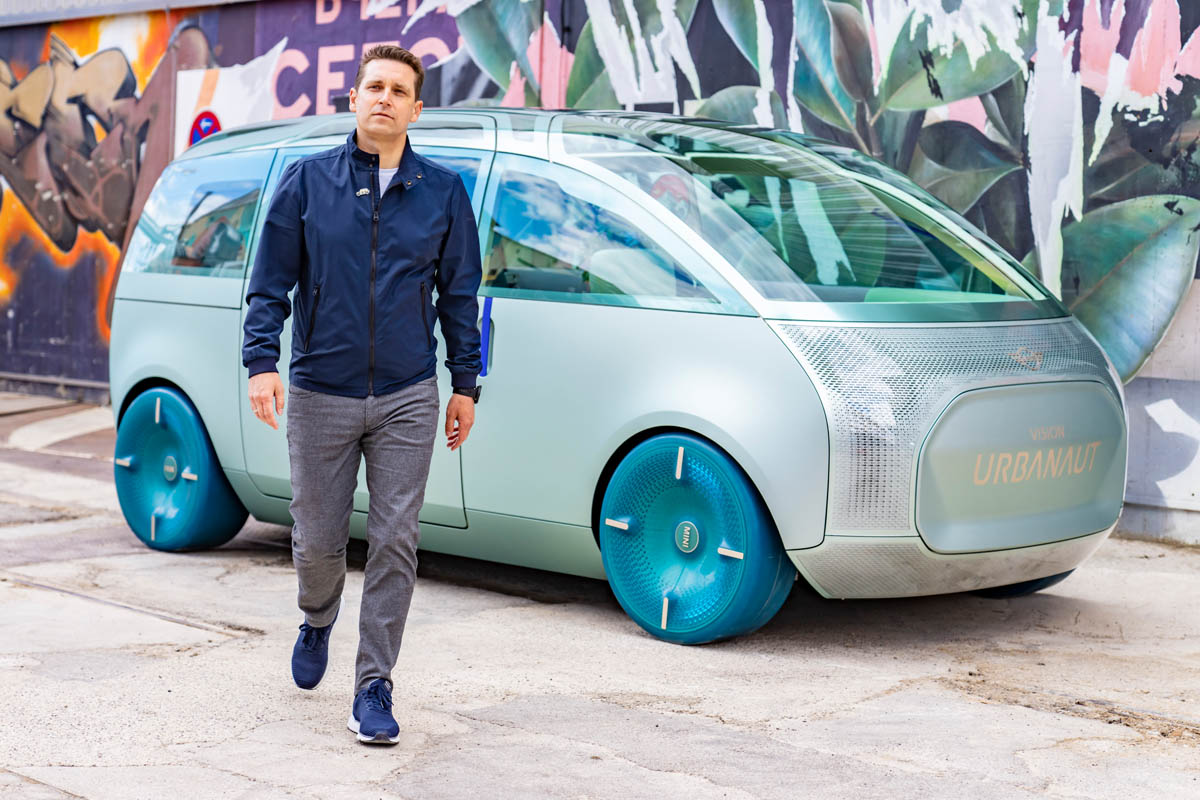
Smartphone integration and MINI App: driving fun and digital lifestyle combined.
In order to align the experience of mobility with the requirements of contemporary target groups and to define trends for driving fun in the future, MINI is working on pioneering developments in the area of digital services and products. Urban mobility is increasingly being transformed into an integrated component of the customer’s digital lifestyle. This is why the user experience associated with the use of the display and control system in MINI makes a major contribution to the driving fun so typical of the brand. Seamless integration of their smartphones enables MINI customers also to remain fully connected with their digital world of living in the vehicle.
The MINI App is offered for iOS and Android operating systems and can be downloaded by users free of charge from the Apple App Store or in the Google Play Store. The app offers continuous information on the status of the vehicle, optional remote functions such as locking and unlocking the doors and direct contact with the driver’s MINI Service Partner. The latest functions include more transparent route planning through Trip Detail Enhancement. After selecting the destination, if users click on “Display Route”, they can see the traffic situation on the planned route, the distance and the driving time directly in the MINI App. The function Fuel Prices empowers users to search for filling stations and easily compare fuel prices without having to open another app. The MINI App includes the Explore MINI Tab that continuously offers relevant and interesting editorial content about the products, services and values of the MINI brand, initially in Germany, Austria and the United Kingdom. This content can be shared with other users.
MINI also defines benchmarks in the area of shared mobility. The MINI Sharing App is easily accessed using a link in the MINI App and it enables family members and friends to issue invitations to each other, provided that they also have the app. If a friend wants to use the vehicle for a certain period of time, they can use the app to send a request to the owner. This is then displayed in the calendar function of the new MINI Sharing App and the owner can confirm and manage the request there. After approval has been given, the vehicle can be unlocked, started and locked using the smartphone.
Digital technology for a community platform and for typical MINI individualisation.
MINI also makes use of the opportunities offered by digitalisation to enhance the community activities typical of the brand. MINI fans across the world exchange views extensively with each other, in a dialogue that often extends beyond models, vehicle segments and national borders. At the same time, they are also open to digital technology and make use of it for lively and spirited communication with each other. MINI gears the digital services it develops closely to the interests of these target groups. The future expansion stage of the MINI App is growing into a community platform. The users can take advantage of services from MINI in this digital ecosystem and at the same time get in touch with each other. The MINI App will be transformed into a digital platform that deepens the relationship between driver and vehicle and strengthens the community of MINI fans.
New opportunities typical for MINI are continually being created in the area of individualisation as a result of digitalisation. In the next model generation of MINI, the instrument panel located in the interior will have surfaces acting as “canvases” that can be tailored by the customer to suit their requirements using the vehicle’s control system. Various colours and patterns can be created on these surfaces by projection. This enables each driver to create their very own personal interior – to match their individual style since they are able to refresh it whenever they want.
Progressing new impulses through cooperation with start-ups.
The MINI start-up accelerator URBAN-X has been working with start-up companies since 2016. These enterprises are aiming to use their innovations to make life in towns and cities better, more agreeable, more convenient, more sustainable or simply an improved experience. Since the start of this venture, more than 70 start-ups from different countries have already been through the accelerator programme.
The founders of the selected start-ups are supported in developing their business model further in a creative exchange with designers, engineers and developers from MINI. The innovations brought about in the course of this process relate to some of the most urgent urban challenges, ranging from building technology and infrastructure, through mobility and energy supply to public health and services for citizens.
5. BIG LOVE FOR THE BRAND. MINI MODEL RANGE,
PRODUCTION AND MARKET PRESENCE WITH CLEAR ALIGNMENT ON PROFITABLE GROWTH.
The realignment of the model range, the expansion of production capacities and conquering new target groups and markets are the focus of the strategy that allows MINI to create the enablers for profitable growth as a global manufacturer of premium cars. The strategy will empower MINI to develop into a brand that increasingly contributes to the sustainable profitability of the BMW Group. MINI consistently concentrates on the vehicle segments, drive technologies and services of the future. There is a particular focus on electromobility, on enhanced commitment in the crossover and in the premium compact segment and on strengthening the market position in China. In this endeavour, MINI is committed to the capacity firmly embedded in the brand’s tradition of rethinking existing concepts, questioning the status quo and seizing challenges as an opportunity.
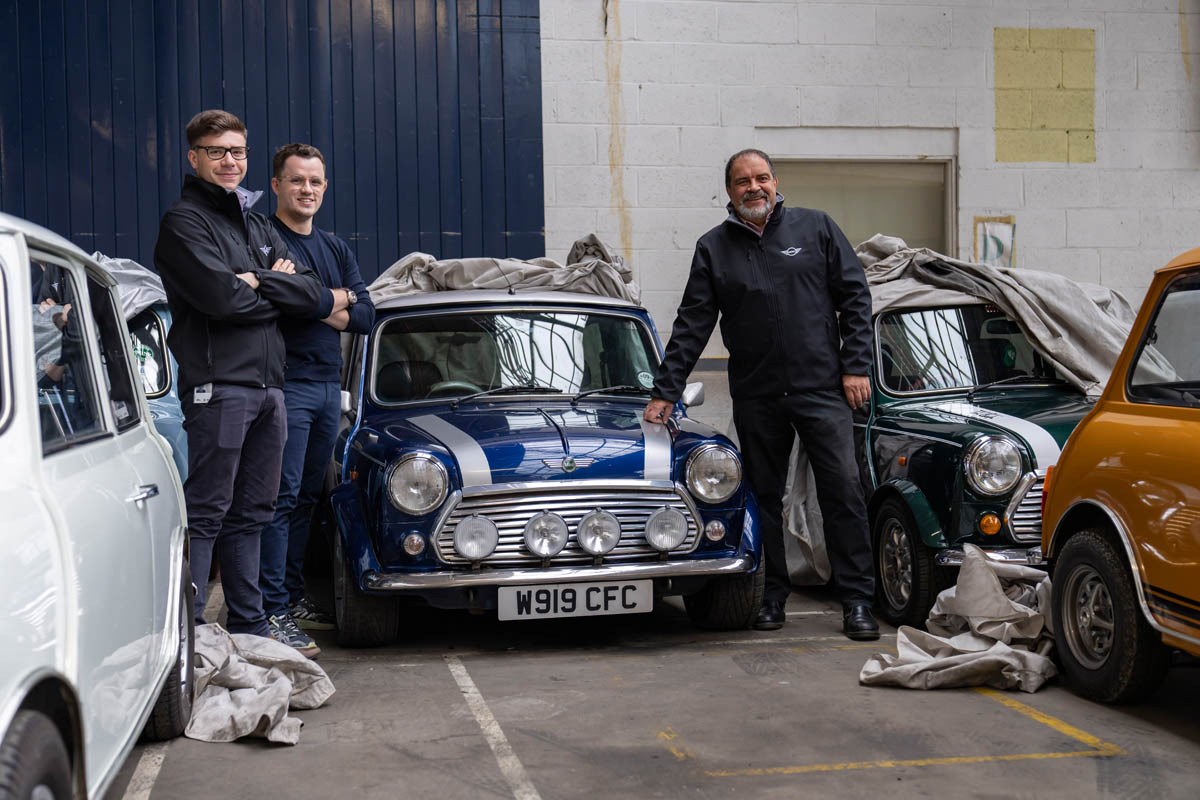
Six decades ago, the classic Mini succeeded in impressing different target groups with driving fun and creative use of space in a variety of different ways. The spectrum of developments ranged from the Mini Van with expanded cargo capacities to the exclusive versions Wolseley Hornet and Riley Elf. Furthermore, only about one year after the debut of the revolutionary little car, the Mini Cooper was already on the scene – the basis for enhanced driving fun on the road and subsequent success in motor sport.
Once again after the relaunch of the brand and the commencement of sales for the modern MINI 20 years ago, the typical attributes of the new premium compact were soon being transferred to other model versions. The current model range in the small car segment comprises the models MINI 3-door, MINI 5-door and MINI Convertible. Furthermore, MINI succeeded in penetrating the premium compact segment. This is where the equally practical and extravagant six-door MINI Clubman and the MINI Countryman as robust all-rounders in the popular crossover style deliver the go-kart feeling typical of the brand so that it can also be experienced in the realms beyond urban mobility. In addition, the MINI community’s awareness of individual style is also taken into account now and in the future with attractive editions and exclusive small series.
The sub-brand John Cooper Works has now been integrated under the umbrella of MINI and it is represented with two extremely sporty models in both the small-car and compact segment. The MINI John Cooper Works GP (combined fuel consumption: 7.3 l/100 km, combined CO2 emissions: 167 g/km) produced in a small series specifically embodies intense passion for motor sport powered by its 225 kW/306 hp four-cylinder turbo engine.
Consistent electrification, typical MINI driving fun.
In parallel with this, the characteristic MINI feeling is enriching the world of electromobility. The roadmap to this is smoothed by a plug-in hybrid model based on the MINI Countryman. In 2019, the MINI Cooper SE Countryman ALL4 (combined fuel consumption: 2.1 – 1.7 l/100 km, combined electricity consumption: 15.5 – 14.8 kWh/100 km, combined CO2 emissions: 47 – 39 g/km in compliance with WLTP) alone represented a share of five percent of total sales for the brand on vehicles with electrified drive. Only a few months later and after the launch of the all-electric MINI Cooper SE (combined fuel consumption: 0.0 l/100 km, combined electricity consumption: 17.6 – 15.2 kWh/100 km, combined CO2 emissions: 0 g/km in compliance with WLTP), this share doubled to ten percent of all new registrations of the brand. In the first half year of 2021, the proportion of electrified models in total global sales of the British premium brand had already reached more than 15 percent.
In 2023, MINI will present the first model of a new generation of purely electrically powered vehicles. The future core portfolio of electric cars will include the MINI 3-door and a crossover model in both the small-car and in the premium compact segment. The brand’s small-car models and a crossover model in the premium compact segment also provide a parallel choice powered by conventional combustion engines. Cars with highly efficient petrol and diesel engines will continue to be an ideal solution in future for target groups and regions where the mobility requirements are not met or not yet met with all-electric drivetrains. MINI is assuming that electric vehicles will already make up 50 percent of total global sales of MINI by 2027. Already in 2025, the last new MINI model powered with a combustion engine will come onto the market. At the beginning of the 2030s, MINI will be an all-electric brand.
Consistent electrification also presents new perspectives for the John Cooper Works brand. MINI is working intensively on concepts for electric John Cooper Works models. This brand was inspired by intense passion for motor sport and the objective is to transfer the performance character to electromobility. This approach will combine sustainability and extreme sportiness in a unique way.
Model offensive in the crossover and in the premium compact segment.
Another component in the strategy for profitable growth is the enhanced commitment by MINI in the class of crossover models. This enables MINI to combine driving fun so typical of the brand in this segment with sustainable drivetrain technology. In order to be able to benefit even more intensively than previously from global growth in the vehicle class, MINI will also offer a crossover model in the small-car segment, which will only be available with a purely electric drivetrain. 2023 will see the production launch of the successor to the current MINI Countryman, which is extremely successful in the premium compact segment. It will be available with an electrified drive and a combustion engine.
Today, MINI already achieves around 40 percent of global vehicle sales with models for the premium compact segment. The successor to the current MINI Countryman is geared towards making more extensive use of this potential than has been the case to date. Furthermore, MINI is working on the development of a new vehicle concept for the premium compact segment. This will meet the wishes of many customers for space and comfort, and increased variability. A host of creative solutions in this area were presented with the MINI Vision Urbanaut. The vehicle provides a particularly fascinating vision with its especially sustainable interior supporting versatile uses and the selection of materials and functionality. The study transfers the typical MINI principle of creative use of space to the future of urban mobility. This vehicle concept therefore meets the claim to pack maximum driving fun, available space and individuality typical of MINI onto the smallest road footprint in the competitive environment.
New production locations, strengthened commitment in China.
The world’s biggest automotive market in China continues to undergo dynamic growth and its importance for MINI will increase significantly in the future. At the present time, around ten percent of all new vehicles of the brand produced are delivered to customers in China. In order to take part in the positive development of the market in China and to have the capability to sell a significantly higher number of cars, MINI will soon move from the status of an import brand to a locally produced car brand.
From 2023 onwards, the new models of the small-car segment developed for e-mobility will be produced in China. Production will be located at the newly constructed automobile plant in the east of China. MINI will use the cars produced there to meet the increasing demand in China and the other global markets for local, emission-free driving fun. The cooperation with the Chinese partner is based on a clearly defined principle: Production follows the market. MINI will be able to serve the growing Chinese automotive market with locally produced cars and at the same time keep production stable at other production facilities.
Production of the next generation MINI Countryman will also be launched in 2023 and the car will be built at the BMW Group Plant Leipzig, making it the first MINI Made in Germany. All other MINI models will be produced at the MINI Plant in Oxford, which remains the heart of MINI production. The United Kingdom will continue to be the home of the MINI brand.
